National Geographic content straight to your inbox—sign up for our popular newsletters here


A practical guide to hiking the Himalayas
It's possible to experience the majesty of the Himalayas without breaking a sweat: Uttarakhand's Kumaon Hills offer routes for beginners, bringing rare birdlife, high-altitude views and remote villages into reach.
When should I go?
The peak hiking seasons in Nepal and Bhutan are February to March and October to November, with clear skies and moderate temperatures. In the northern Indian state of Uttarakhand, March to April and September to October offer the best weather without excessive heat. In most areas, views vanish during the rainy monsoon season (June to September). Trekking in deep winter (December to February) can be a bitterly cold experience, best left to accustomed hikers.
What clothes should I bring?
Temperatures drop quickly as you gain altitude, but you’ll work up a sweat while hiking, so bring layers that you can take off and put on again, as needed. Thermal underwear, lightweight trousers, fleece tops and a down jacket for cold nights are core pieces of kit.
What should I wear on my feet?
Some people trek in walking or trail-running shoes, but hiking boots will give your ankles more support. Use quick-drying socks and dry out your boots if they get wet to reduce the chance of blisters. Break in any new footwear before you hit the trails, too, and use hiking poles to reduce the impact on your knees.
Do I have to carry all my own gear?
Many trekkers do, but it’s easy to hire porters or yaks and packhorses at trailheads to carry your bags. Porter-guides (who guide trekkers and also help carry bags) charge from US$20 (£15) per day, and usually speak some English. On an organised trek, you may be able to hike with just your camera and water bottle or a light day pack. Do I need a sleeping bag? Himalayan teahouses provide thin mattresses and blankets, but rooms are rarely heated, and a quality sleeping bag will help ensure a cosy night’s sleep. A ‘four season’ rating is best for high-altitude routes.
Should I buy bottled water on the trails?
The Himalayas are strewn with empty plastic bottles, left behind by irresponsible trekkers. Instead, bring a water bottle and purification tablets, or a portable water filter, to purify water as you go from the rivers that snake between high passes. Is altitude sickness a problem? And if so, how can I counteract the effects? Acute Mountain Sickness (AMS) is a risk on any route that climbs above 2,500m. To combat it, limit your rate of ascent, taking regular rest days to acclimatise. Diamox (Acetazolamide) tablets can also reduce mild symptoms such as headaches, but if you experience severe symptoms, including nausea, dizziness or confusion, descend immediately — AMS can be fatal.
Will I need to get a trekking permit to hike in the Himalayas?
To visit Bhutan, you’ll need to arrange an organised tour through a licensed travel company; the overall price will include visa fees, obligatory daily tourist fees, and most of your costs, including for treks. In Nepal, you’ll need to arrange a guide through a local trekking agency and pay for a Trekking Agencies’ Association of Nepal card ( taan.org.np ). There are fees to enter conservation areas, including Sagarmatha National Park on the Everest Base Camp trail, and permits are needed to trek through border regions such as Mustang and Dolpo.
FREE BONUS ISSUE
Related topics.
- MOUNTAINEERS
- BACKPACKING
You May Also Like

How to plan the ultimate adventure in the Himalayas, from beginners' hikes to Everest base camp

Was Nepal right to ban solo trekking in the Himalayas?

The essential guide to visiting Alaska

This thrilling Chilean trek is the world’s southernmost hike

5 of the best books to guide you around the Alps
- Environment
- Perpetual Planet
History & Culture
- History & Culture
- Mind, Body, Wonder
- Paid Content
- Terms of Use
- Privacy Policy
- Your US State Privacy Rights
- Children's Online Privacy Policy
- Interest-Based Ads
- About Nielsen Measurement
- Do Not Sell or Share My Personal Information
- Nat Geo Home
- Attend a Live Event
- Book a Trip
- Inspire Your Kids
- Shop Nat Geo
- Visit the D.C. Museum
- Learn About Our Impact
- Support Our Mission
- Advertise With Us
- Customer Service
- Renew Subscription
- Manage Your Subscription
- Work at Nat Geo
- Sign Up for Our Newsletters
- Contribute to Protect the Planet
Copyright © 1996-2015 National Geographic Society Copyright © 2015-2024 National Geographic Partners, LLC. All rights reserved
Book Your 2024 & 2025 Adventures Risk free.

Latest Stories
- Our Commitment
- Customer Reviews
The ultimate Himalayan trek and adventure of a lifetime. Stand face to face with Mount Everest and trek along side 4 of the world's tallest peaks. Enjoy the welcoming culture of the Sherpa.
Himalayanwonders Top Treks
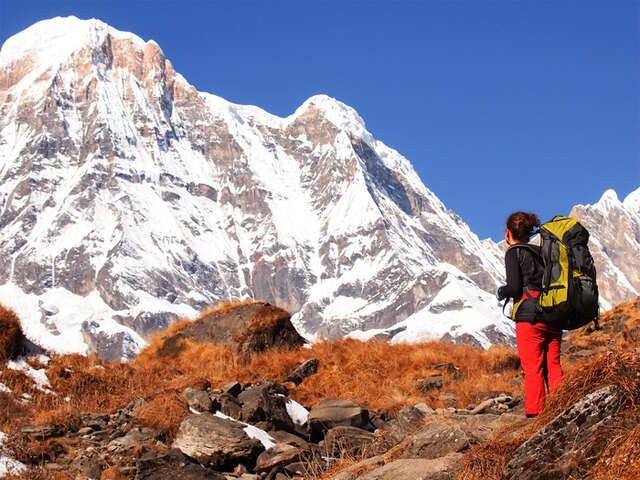
Join our Fixed Departure

Ready to take you're trekking to the next level? The Nepal Mountaineering Association (NMA) has designated 33 trekking peaks that can be tackled without an expedition permit.

Everest Base Camp, the Annapurna Circuit, Markha Valley and more. Looking for the best trekking options in the Himalayas?

The Himalayas and the Tibetan Plateau combined are one of the most extreme expressions of mountain...
Get off the beaten path with one of these exclusive departures.
Here we answer the most common questions before every trip.
click here for more treks >

#HimalayanWonders

- Choosing a Trek
- Tea House Trekking
- Trekking Tips
- Flying to Lukla
- Packing List
- Fitness Training
- Travel Insurance
- Arrival & Visas
- Best Time to Go
- Staying Healthy
- Meet the Team

- Privacy Policy
- Terms & Conditions
A Complete Guide to Trekking Tours in India
India Tours
International tours, destination wedding, medical tourism, plan your trip.
- Trekking in India
- Best Treks Himalayas
Trekking in Himalayas
Trekking enthusiasts looking for the ultimate adventure trekking tours in the Himalayas can check out our best Himalayan trekking tour packages, which are available at reasonable prices & offer you a wholesome adventure experience. The Indian Himalayan states like Uttarakhand, Himachal, Ladakh and Sikkim, offer plenty of exciting trekking trails for all kinds of trekkers. Be It Summer, Monsoon or Winter, the mighty Himalayas always offer plenty of challenges & adrenaline rush to the mountain lovers. During trekking in the Himalayas, you also get an opportunity to explore the rich landscape dotted with several lakes, valleys, meadows, snow-capped mountains, green dense forests & witnessing the rare wildlife of the Himalayas. Along with the adventure travel experience, the Himalayas journey also introduce you to the amazing lifestyle, culture, traditions & customs of Himalayan people.
Best Selling Himalayas Trekking Tour Packages
8 Nights - 9 Days
Kuari Pass Trek
4 Nights - 5 Days
Chopta Chandrashila Trek
Hampta pass trek.
08 Nights - 09 Days
Adi Kailash Trek
12 Nights - 13 Days
Frozen River Trek
9 Nights - 10 Days
Stok Kangri Trek
5 Nights - 6 Days
Brahmatal Trek
15 Nights - 16 Days
Green Lake Trek
6 Nights - 7 Days
Dzongri Trek
11 Nights - 12 Days
Bara Bhangal Trek
Kareri lake trek, gangotri tapovan trek, discover the best trekking tours in the himalayas.
- Uttarakhand
Fixed Departure Tours
Uttarakhand himalaya trekking packages, nag tibba trek, darma valley trek, sunderdhunga bc trek, panchachuli bc trek.
10 Nights - 11 Days
Kafni Glacier Trek
Ladakh himalaya trekking packages.
14 Nights - 15 Days
Junglam Trek
Sham valley trek, markha valley trek, snow leopard trek.
24 Nights - 25 Days
Darcha Lamayuru Trek
Ladakh monastery trek, sikkim himalaya trekking packages, singba rhododendron sanctuary trek, singalila - sandakphu trek.
16 Nights - 17 Days
Singalila Ridge & Goecha La Trek
Sikkim and kanchenjunga trek, kanchenjunga base camp trek, yuksom to dzongri & goecha la trek, himachal himalaya trekking packages, beas kund trek, manimahesh kailash trek, kinner kailash parikrama trek.
7 Nights - 8 Days
Bhrigu Lake Trek
Sach pass trek, kashmir himalaya trekking packages, kashmir great lakes trek, chattargul mahlish gangabal trek, bandiopra gangabal naranag trek, tulail gangabal naranag trek, tral narastan marsar trek, sonmarg vishansar naranag trek, pahalgam tarsar marsar trek, sonamarg vishansar bandipora trek, other popular adventure in himalayas, peak climbing, mountain biking, jeep safari, motor biking, river rafting, skiing tour, camel safari, frequently asked questions, q. what is the best time to go trekking in indian himalayas.
In India, each season has its own specialty when it comes to trekking in the Indian Himalayas. There are treks for every season: summer, winter and monsoon. Summer & monsoon is a good time for trekking in Kashmir, while summer & winter is ideal for trekking in Sikkim. In Himachal and Uttarakhand, you can enjoy trekking throughout the year.
Q. Will you provide an expert guide and trekking equipment during the trekking tour?
Yes, we will provide an expert guide and trekking equipment during the trekking tour, along with all other requirements.
Q. Is there snowfall in Indian Himalayas in April?
.Snowfall stops in most places in Indian Himalayas by mid-March, so you won’t find any snowfall in the lower altitude treks. However, you will come across ice and snow on trekking trails of high altitude treks.
Q. Where will I stay during the course of my treks?
You will be staying in camps/tents during the course of your trekking expedition.
Q. What are the famous trekking mountain peaks in the Indian Himalayas?
Some of the famous trekking mountain peaks in the Indian Himalayas are Kang Yangtse II and Stok Kangri in Ladakh, Pangarchulla Peak in Uttarakhand and Friendship Peak in Himachal Pradesh.
Q. Can you tell me some of the amazing treks for winters in the Indian Himalayas?
Some of the amazing treks for winters in the Indian Himalayas are Chadar Trek (Ladakh), Brahmatal Trek (Uttarakhand), Har ki Dun (Uttarakhand), Kuari Pass (Uttarakhand), Prashar Lake Trek (Himachal Pradesh), Kareri Lake Trek (Himachal Pradesh) and Dodital Lake Trek (Uttarakhand).
Q. Which treks in the Indian Himalayas are best suited for the summer season?
Some of the treks in the Indian Himalayas best suited for the summer season are Auden’s Col, Kedartal & Roopkund Treks in Uttarakhand, Nubra Valley, Stok Kangri & Darcha Padum Treks in Ladakh, Buran Ghati, Indrahar Pass, Pin Parvati Pass and Prashar Lake Treks in Himachal Pradesh, and Rhododendron, Sandakphu and Kanchenjunga Base Camp Treks in Sikkim.
Q. Tell me some of the most amazing treks in the Indian Himalayas during the monsoon season?
Some of the most amazing treks in the Indian Himalayas during the monsoon season are Valley of Flowers, Hemkund Sahib and Chopta Chandrashila Treks in Uttarakhand, Hampta Pass, Beas Kund and Pin Parvati Treks in Himachal, and Darcha Padum, Sham Valley and Stok Kangri Treks are the most famous treks in Ladakh.
Q. What are some of the picturesque nature treks in the Indian Himalayas?
Valley of Flowers Trek, Sandakphu Phalut Trek, Brahmatal Trek, Bhrigu Lake Trek, Nubra Valley Trek and Hampta Pass Trek are some of the most picturesque nature treks in the Indian Himalayas.
Q. Are there any offbeat treks for adventure lovers in the Indian Himalayas?
Some of the offbeat treks for adventure lovers in the Indian Himalayas are Brahmatal Trek (Uttarakhand), Indrahar Pass Trek (Himachal Pradesh), Bagini Glacier Trek (Uttarakhand), Kalicho Pass Trek (Jammu and Kashmir), Tso Lhamo Lake Trek (Sikkim) and Gwaru Pass Trek (Himachal Pradesh).
Q. Which treks in the Indian Himalayas offer opportunities for snow leopard sightings?
Some of the treks in the Indian Himalayas for spotting the snow leopards are the Snow Leopard Trek and Nanda Devi Trek (Uttarakhand).
Q. When does Valley of Flowers trek open for tourists?
The Valley of Flowers Trek is open for tourists from June to October every year.
Q. Do you provide all the necessary equipment for trekking in the Indian Himalayas?
Yes, we provide all the necessary equipment for trekking in the Indian Himalayas.
Why TMI for Trekking Holidays
Experienced.
An experienced trekking tour operator, with a team of an experienced adventure enthusiast ensure to give our clients well-designed trekking tour packages.
We are certified by major tour and travel associations in India and world like IATA, IATO, TAAI, IMF & MOT (Ministry of Tourism, Govt of India).
Happy Customers
TMI has received numerous accolades from its happy customers for its excellent services and best adventure holidays.
Local Offices
We have local office in Ladakh, Uttarakhand, Sikkim, Jammu & Kashmir, & Himachal Pradesh for our customers to find assistance anytime and anywhere.
About Trekking Tours in the Himalayas
Browse our top Indian Himalayan trekking tour packages which are for both amateur as well as advanced trekkers, as there are easy, moderate & difficult treks to choose from. We make the best arrangements for a trekking expedition in the Himalayas including expert guidance, which ensure that you have a hassle free experience.
Uttarakhand, Sikkim, Himachal and Ladakh are some of the Indian Himalayan states that attract trekking enthusiasts in large numbers every year, and that’s hardly surprising! Trekking in the Himalayan states, which are blessed with a magnificent beauty evenly spread across their spectacular landscape, offers a delightful mixture of adventure, sightseeing & views that remain etched in your memory for a long time.
Trekking in the Ladakh Himalayas, or the famous Chadar Trek, which involves walking on the frozen River Zanskar, offers you amazing sightseeing opportunities & adventure, where you can visit monasteries with treks like Lamayuru to Alchi & Padum to Darcha, Nubra Valley Trek where you can see the two humped Bactrian camels.
Uttarakhand & Himachal are two of the best Himalayan trekking destinations in India, thanks to their numerous trekking trails. Uttarakhand’s alpine meadows, views of the Nanda Devi (the second highest mountain in India), religious sites & mountain passes like Kalindi Khal, all these can be explored with famous treks in Uttarakhand like Binsar Trek, Nag Tibba Trek, Valley of Flowers trek, Rupin Pass Trek & Auden’s Col trek.
Trekking in Himachal Himalaya is a different experience altogether, with its lovely trekking trails, dotted with rhododendron & apple orchards, sprawling meadows, ancient villages & lakes, which can be explored with treks like Hampta Pass Trek, Pin Parvati Pass Trek & Friendship Peak trek.
Kashmir, one of the most beautiful places in India, is one of the best places for adventure lovers to enjoy trekking. It offers trekking options for everybody. One can opt for short treks like Aru Valley to Pahalgam, Sonmarg to Thajiwas Glacier, or challenging treks like the Great Lakes Trek, Tarsar & Marsar Lakes trek & Gangabal Lake Trek. Advanced trekkers can also take the Kolahoi Glacier Trek, one of the highest treks in Kashmir.
Sikkim is also a trekker’s paradise with its lush landscape, high altitude mountain passes, sacred lakes & views of Mt. Kangchenjunga. One can opt for easy treks like Darjeeling Trek & Yuksom-Dzongri-Goecha La Trek, challenging ones like Singalila Ridge, Goecha La & Green Lake Treks & those that give the ultimate adrenaline rush like Sikkim Kanchenjunga & Kanchenjunga Base Camp Trek, which rewards you with views of several mountain peaks like Frey, Koktang & Kabu.
More about trekking in India
Our latest informative travel blogs, explore the hidden natural treasure of himalayas with these unexplored treks in uttarakhand, india trekking guide: best informative blogs on india himalayas trekking tour, where to visit in uttarakhand and himachal for adventure, chilling, and finding peace for a post-lockdown holiday, india trekking information at a glance, trekking destinations, special interests treks.
- Wildlife Treks
- Spiritual Treks
- Weekend Treks
- Cultural Treks
- Family Treks
Best Time for Trekking in India
- Best Time to Do Ladakh Trek
- Best Time to Do Uttarakhand Trek
- Best Time to Do Sikkim Trek
- Best Time to Do Himachal Trek
- Best Time to Do Kashmir Trek
- Best Time to Do Garhwal Trek
- Fixed Departure for Ladakh
- Fixed Departure for Uttarakhand
- Fixed Departure for Sikkim
- Fixed Departure for Himachal
- Fixed Departure for Kashmir
Seasonal Treks
- Spring Season Treks
- Summer Season Treks
- Monsoon Season Treks
- Autumn Season Treks
- Winter Season Treks
Essential Links
- Things to Carry
- Terms & Condition
- Trekking Equipment
- Trekking Permit
How It Works
- Tell us details of your holiday plan.
- After you submit the form, one of our travel experts will get back to you with customised holiday package based on your requirement, within 24 hours.
- Grab the deal and start packing your bags for an indelible holiday with Tour My India.
Call Us for details
+91-9212553106
Request a quote.
Treks of Himalaya
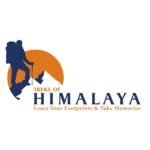
Himalaya's largest treaking organization
About treks of himalaya.
With over two decades of experience and expertise in trek leading, mountaineering expeditions, high pass crossings, learning-based camp programs, cycling tours, snow skiing, and more, we are the Top-rated trekking company in the Himalayas. Our qualified and experienced team of local guides, trek, expedition leaders, and cooks is dedicated to providing exceptional service during your trekking and peak climbing expeditions in Himachal Pradesh.
Accommodation
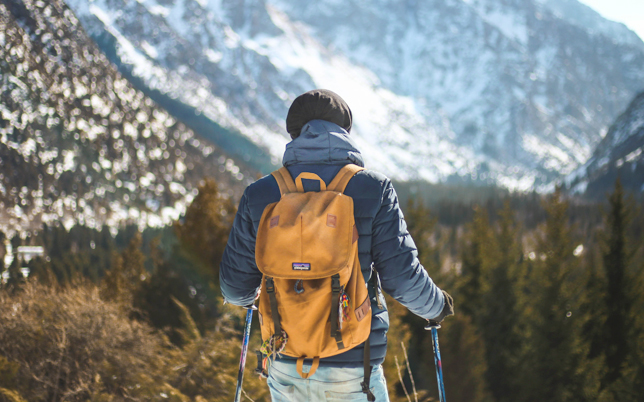
India's Leading Trekking Platform
We are local leaders for himalayan trips throughout the entire himachal pradesh that we 100% trust. our specialty is we plan the program according to what our valuable clients as par like to do., our gallery.
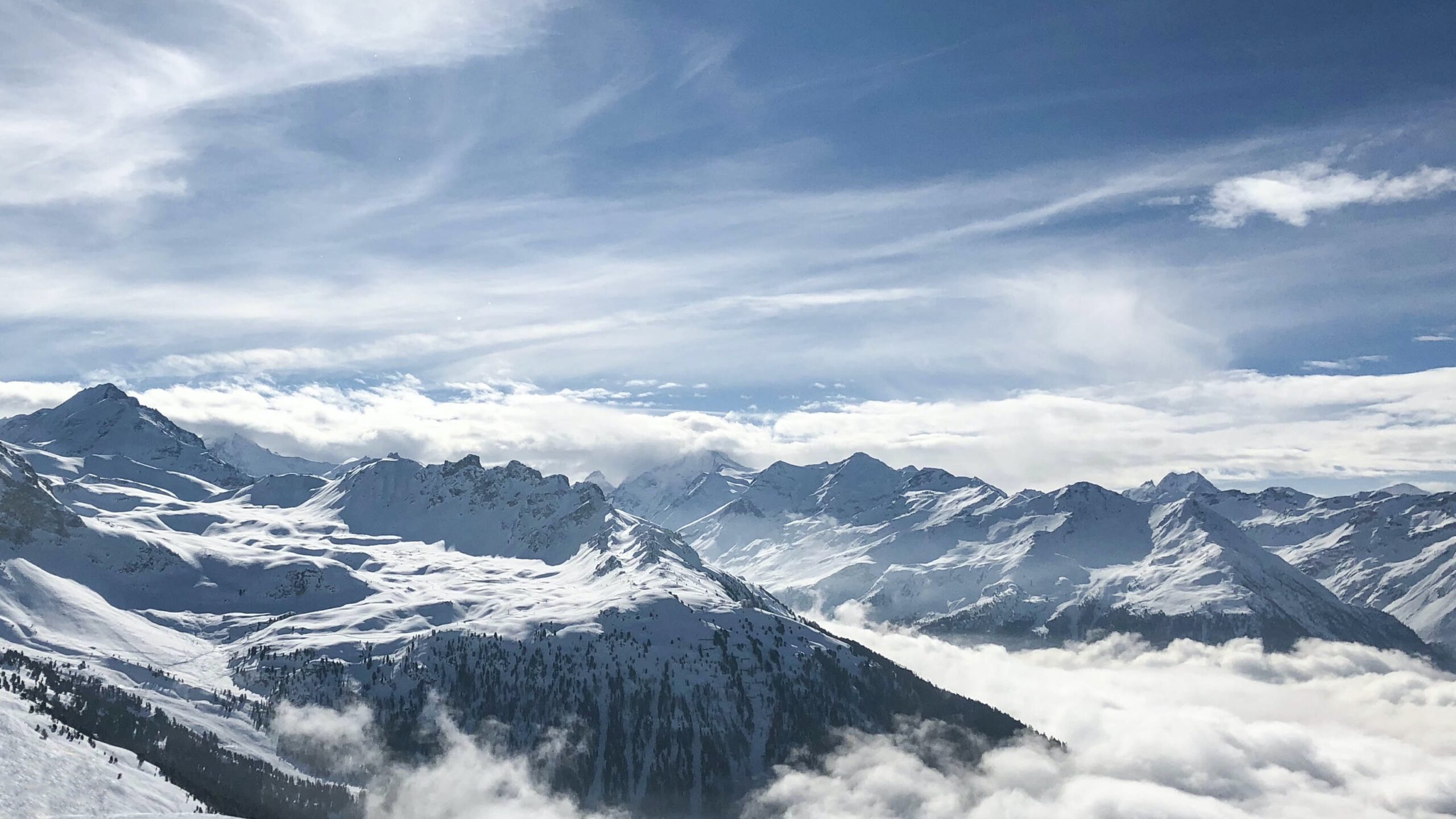
Outdoor Adventures for Young People
No matter clients are beginners or professional mountaineers we are here for their physical and mental safety, that's our first preference., check our upcoming treks, recommended camps by our instructors.
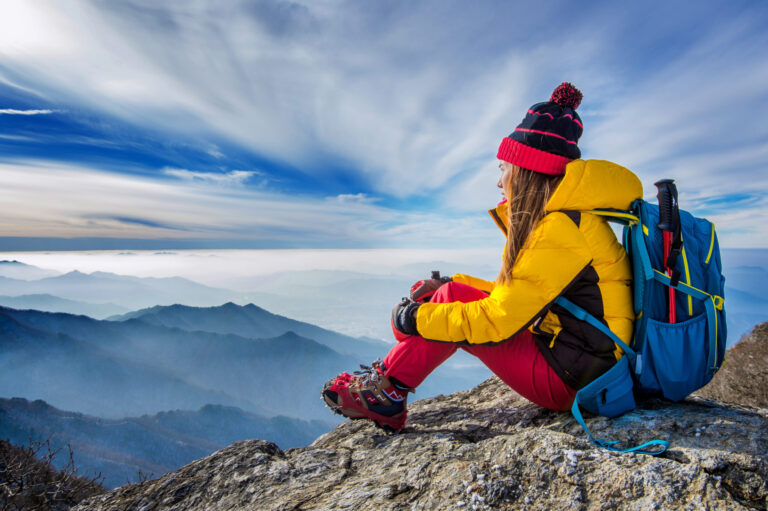
Our Treaks Gallery
Why trekkers love treks of himalaya, at treks of himalaya, our primary goal is to provide authentic and adventurous experiences of nature to our clients. our expert team members are always prepared to deliver just that..
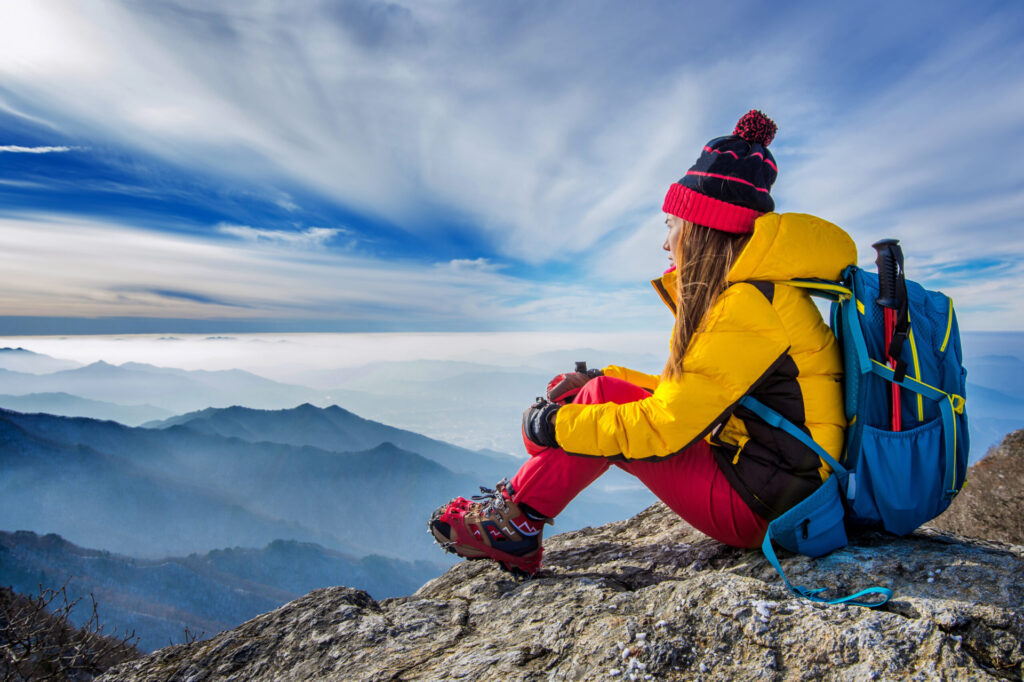
Too Young for Adventure Treks?
Dream. explore. discover, expert local guides.
Our team consists of expert local guides who hold MOI and wilderness qualifications and have a minimum of 5 years of experience in outdoor activities. Rest assured, our guides are well-prepared to offer you the best possible experience during your trek or expedition.
Excellent Food
We take pride in offering delicious and nutritious meals throughout your journey, ensuring that you are well-fed and energized for the trekking ahead.
Happiness Guaranteed
We guarantee your happiness because our programs are customized to meet the preferences and needs of each individual client. Rest assured, we prioritize your satisfaction and enjoyment throughout your entire trekking or expedition experience.
Personalized Itineraries
We work with our clients to create customized itineraries that cater to their specific interests, abilities, and schedules, ensuring that each trek or expedition is tailored to meet their unique needs.
Tales from the Mountains
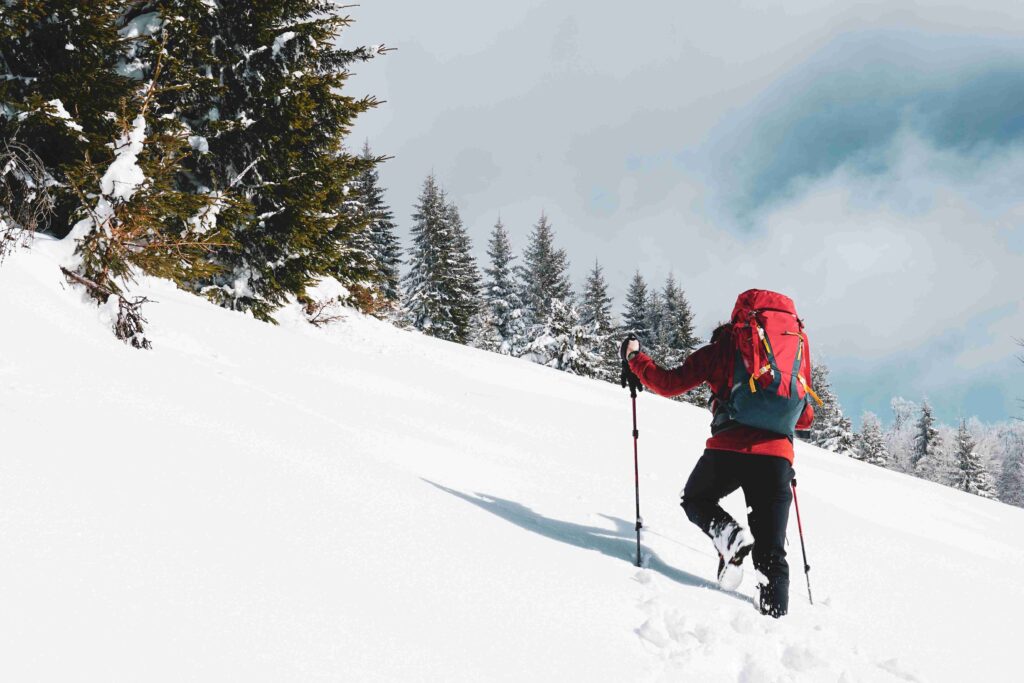
Rani Sui Lake
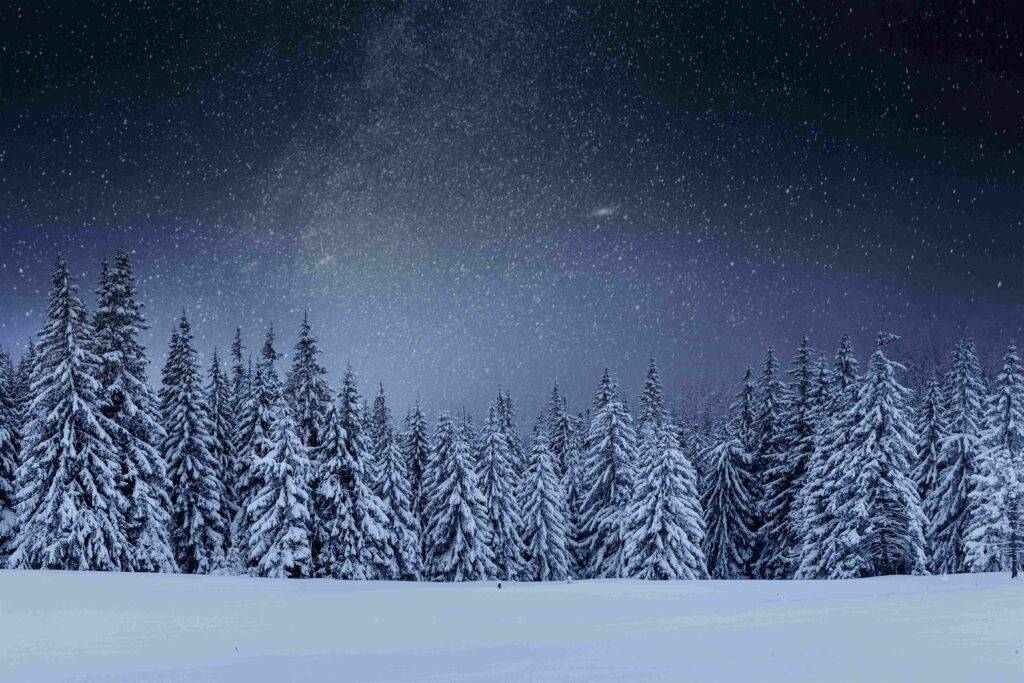
Bhrigu Lake

The Ultimate Guide to Trekking in the Himalayas
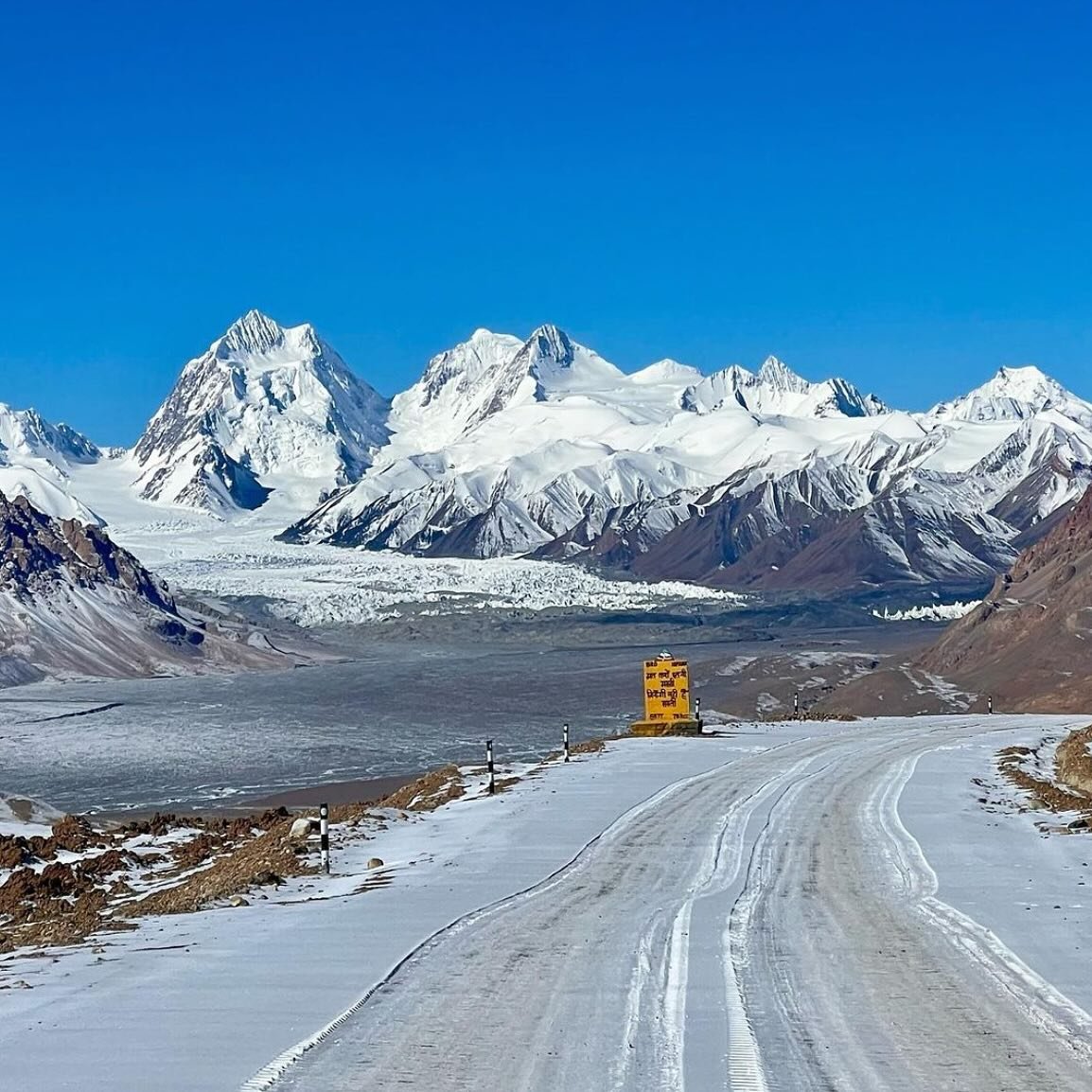
Trekking in the Himalayas is a dream come true for outdoor enthusiasts and adventurers. The towering peaks, breathtaking landscapes, and rich cultural heritage make this region a must-visit for those seeking an unforgettable experience. In this ultimate guide, we will delve into the various aspects of trekking in the Himalayas, from understanding the terrain to preparing for your adventure, choosing the right route, and navigating cultural etiquette.
Understanding the Himalayan Terrain
Before embarking on a Himalayan trek, it is crucial to familiarize yourself with the unique geography of this region. The Himalayas, known as the “Roof of the World,” span several countries, including India, Nepal, Bhutan, and Tibet. These mountains are home to some of the highest peaks in the world, including Mount Everest and Kanchenjunga.
Within the Himalayas, you’ll encounter diverse landscapes, ranging from glaciers and snow-capped mountains to lush valleys and alpine meadows. As you ascend in altitude, the terrain becomes more challenging, with steep slopes, rocky paths, and narrow ridges. It is essential to be physically and mentally prepared for the demanding nature of the trails.
The Unique Geography of the Himalayas
One of the remarkable features of the Himalayas is the presence of deep gorges and high passes. These natural formations pose both challenges and scenic beauty for trekkers. Crossing these passes requires careful planning and an understanding of the potential risks involved, such as altitude sickness and unpredictable weather conditions. The correct equipment is essential. However, the awe-inspiring views from these vantage points make every effort worthwhile.
The Himalayas are also home to numerous rivers and glacial lakes, which add to the enchantment of the trekking experience. The pristine waters of these lakes and rivers not only offer picturesque views but also serve as a source of freshwater for the local communities residing in these remote areas.
Weather Patterns and Climate Zones
One of the critical aspects to consider while trekking in the Himalayas is the weather patterns and climate zones you will encounter along your journey. Due to the immense size of the mountain range, the climate can vary significantly from one region to another. It is essential to research and understand the weather patterns of the specific area you plan to trek in.
The Himalayas have distinct climate zones, including tropical, subtropical, temperate, and alpine. As you ascend in altitude, the temperatures drop, and the air becomes thinner. It is crucial to dress in layers and carry appropriate gear to adapt to the changing weather conditions.
Flora and Fauna of the Himalayas
The Himalayas are not just a visual spectacle; they are also home to a rich biodiversity of flora and fauna. The region boasts a stunning variety of plant species, including colorful rhododendrons, orchids, and junipers. As you trek through different vegetation zones, you’ll witness the transition from dense forests to alpine meadows.
Moreover, the Himalayas house diverse wildlife, such as snow leopards, red pandas, Himalayan tahr, and musk deer. If you’re lucky, you may spot some of these elusive creatures during your trek. It is crucial to respect the natural habitats of these animals and follow established guidelines to minimize your impact on their ecosystems.
Preparing for Your Himalayan Trek
Preparing adequately for your Himalayan trek is essential to ensure a safe and enjoyable experience. Here are some key factors to consider:
Physical Fitness Requirements
Trekking in the Himalayas requires a reasonable level of physical fitness. The steep ascents and descents, coupled with high altitudes, can put strain on your body. It is recommended to engage in regular aerobic exercises, such as jogging or cycling, to build stamina and endurance. Additionally, incorporating strength-training exercises and practicing hiking with a loaded backpack will help simulate the challenges you may face during the trek.
Essential Gear and Equipment
Having the right gear and equipment is crucial for a successful trek in the Himalayas. This includes sturdy and comfortable trekking boots, suitable clothing for various weather conditions, a reliable backpack, a sleeping bag, a trekking pole, and a headlamp. It is also essential to carry a first aid kit, water purification tablets, and high-energy snacks to sustain yourself during the trek.
Health and Safety Considerations
Prioritizing your health and safety should be a top concern during your Himalayan trek. Acclimatization is crucial at higher altitudes to avoid altitude sickness. It is recommended to include rest days in your itinerary to allow your body to adjust to the changing altitude gradually. Staying hydrated, eating nutritious meals, and avoiding excessive alcohol and caffeine consumption are also important for maintaining your well-being.
Additionally, it is essential to obtain comprehensive travel insurance that covers high-altitude trekking and medical emergencies. Familiarize yourself with the emergency evacuation procedures of the region you plan to trek in and carry relevant contact information.
Choosing Your Trekking Route
With numerous trekking routes to choose from, selecting the right one can be overwhelming. Here are some factors to consider:
Popular Himalayan Treks
• everest base camp trek, • annapurna circuit trek, • langtang valley trek, these treks offer a balance of stunning landscapes, cultural immersion, and a moderate level of difficulty. they are well-established and cater to both novice and experienced trekkers., off-the-beaten-path treks, • manaslu circuit trek, • kanchenjunga base camp trek, • dolpo trek.
If you’re looking for a more remote and adventurous experience, these off-the-beaten-path treks are worth considering. They offer a chance to explore lesser-known regions and interact with local communities that have retained their traditional way of life.
Assessing Difficulty Levels
Each trek in the Himalayas has its own set of challenges and difficulty levels. Factors such as altitude, distance, and terrain contribute to the overall difficulty of a trek. It is important to assess your abilities honestly and choose a trek that aligns with your fitness level and experience.
Consider consulting with experienced trekking companies or guides who can provide valuable insights and advice based on your preferences and limitations.
Navigating Cultural Etiquette
While trekking in the Himalayas, it is essential to respect the local customs and traditions. Here are some guidelines:
Respecting Local Customs and Traditions
The Himalayan region is culturally diverse, with each community having its own set of customs and traditions. Educate yourself about the local culture and norms before embarking on your trek. Dress modestly, be mindful of your behavior, and seek permission before taking photographs of people or religious sites. Engaging in cultural exchanges with the locals can enrich your experience and foster mutual understanding.
Interacting with Local Communities
The hospitality of the Himalayan communities is renowned. Interacting with locals can offer valuable insights into their way of life and contribute to a more meaningful trekking experience. Ensure that your interactions are respectful and considerate. Supporting local businesses, such as homestays and locally-owned tea houses, helps sustain the local economy and promotes responsible tourism.
Sustainable Trekking Practices
As a responsible trekker in the Himalayas, it is crucial to minimize your impact on the environment. Follow established trekking trails to reduce erosion and preserve the fragile ecosystems. Dispose of waste properly and avoid single-use plastics. Furthermore, support organizations and initiatives that promote sustainable tourism and conservation efforts in the region.
In conclusion, trekking in the Himalayas is a transformative experience that combines natural beauty, physical challenges, and cultural immersion. By understanding the unique terrain, adequately preparing for your trek, choosing the right route, and navigating cultural etiquette, you can make the most of your Himalayan adventure. Embrace the majesty of the mountains, connect with local communities, and leave a positive impact on this awe-inspiring region.
Related Posts
Solo trekking in kashmir.
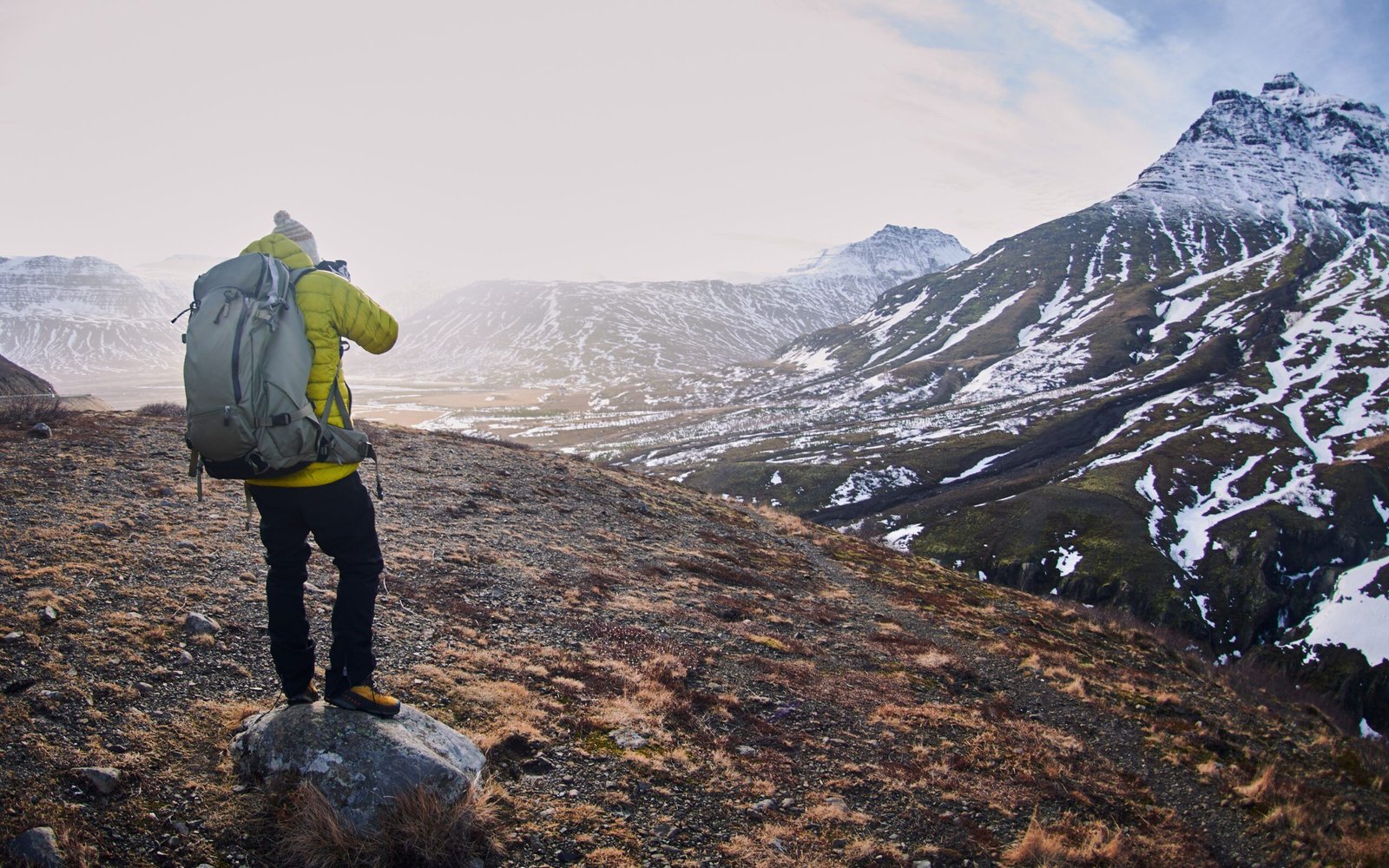
A Photo Journey: Trekking Through the Magnificent Landscapes of Kashmir
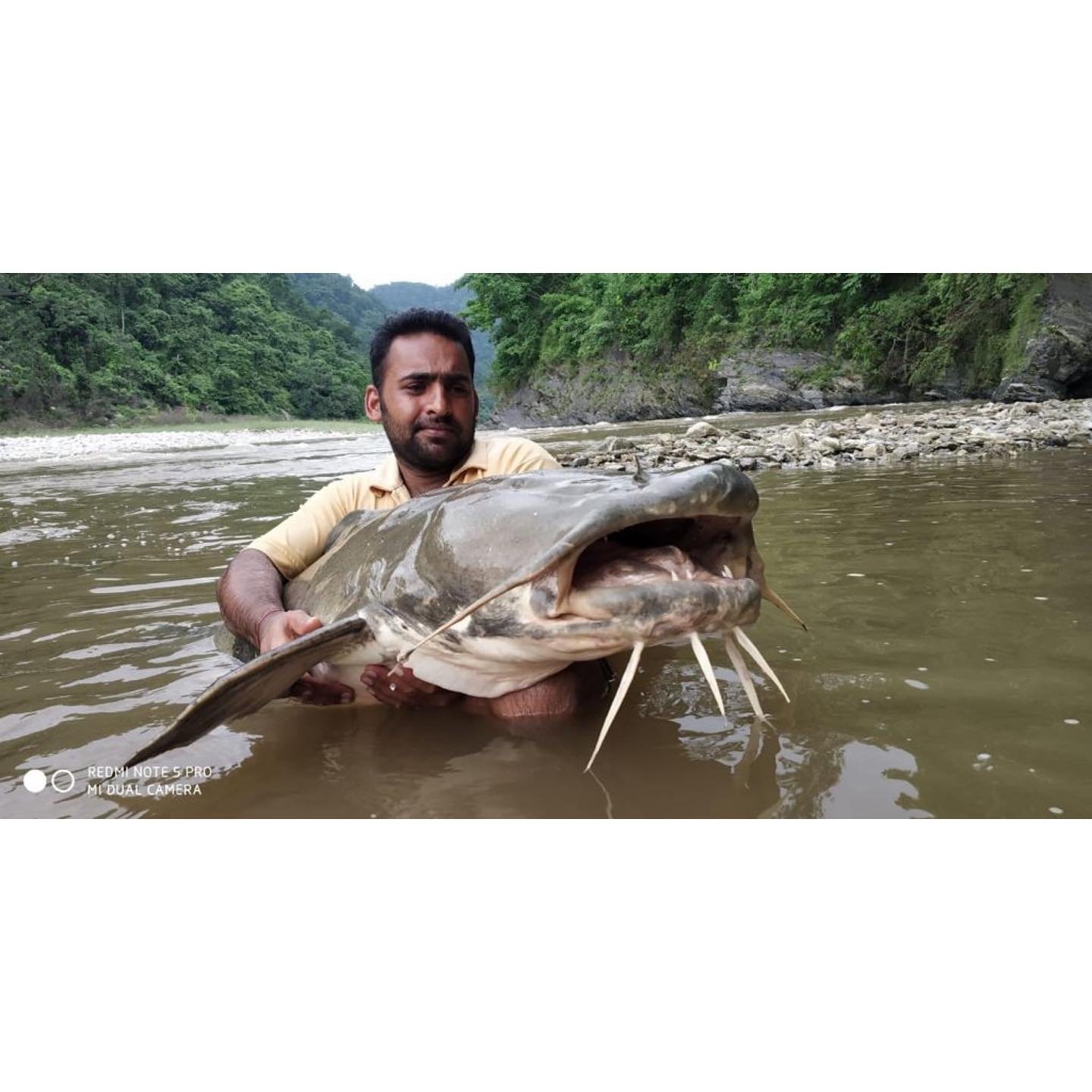
The Mystique of the Goonch Catfish: A Treasure of the Underwater Realm
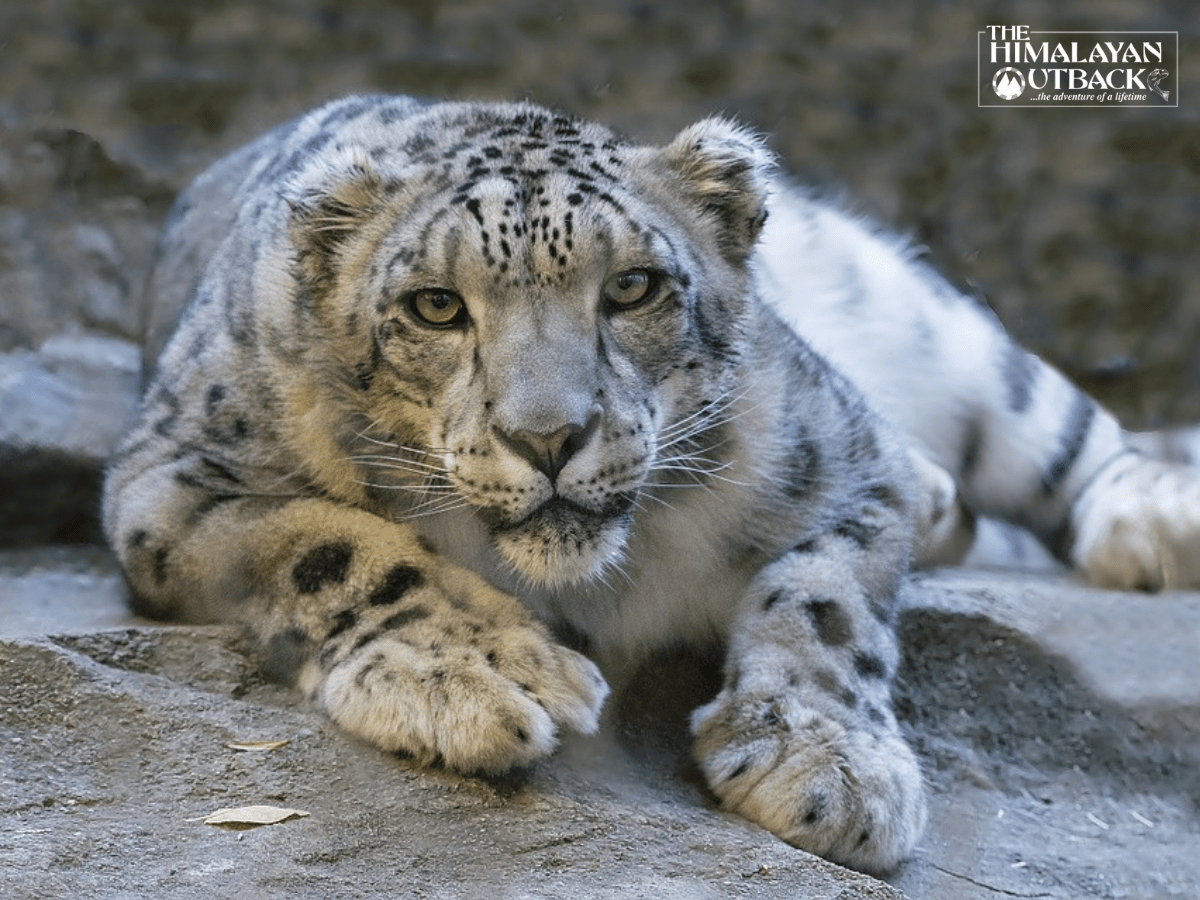
Snow Leopard Trekking Expeditions in Spiti Valley
- Birdwatching
- Curated Journeys
- +91 9815605847
- [email protected]
- Antler Woods, Main, road, opposite Siswan Dam, Baddi, Siswan, Punjab 140110
The Himalayan Outback was featured in

© Copyright 2023 Himalayan Outback. All rights reserved | Managed By Pinaak Ventures

walking the himalayas.com

Winter Wonderland
WINTER TREKS OF INDIA
Best winter treks in India, known for their stunning landscapes and unique experiences:
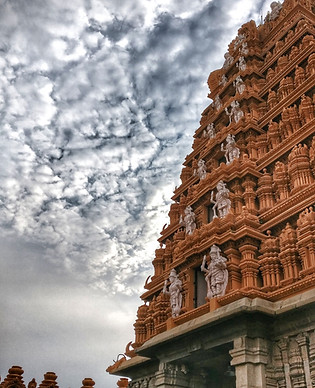
Spiritual Destinations
SPIRITUAL DESTINATIONS OF INDIA
Spiritual destinations that offer you a chance to connect with your inner selves, immerse in ancient traditions, and experience profound tranquility.

Travel & Leisure
FAMILY & GROUP TOURS
Amazing places in Himalayas providing you an enjoyable and seamless experience with your family and friends

Expeditions in India
EXPEDITIONS IN HIMALAYAS
With its diverse mountain ranges, including the mighty Himalayas, Western Ghats, and several other lesser-known ranges, India presents a wide array of options for mountain expeditions.
.jpg)
Trekking in Himachal
BEST TREKS IN HIMACHAL PRADESH
Trekking in Himachal Pradesh, nestled in the lap of the majestic Himalayas, is an adventure seeker's paradise.
.jpg)
Trekking in Uttarakhand
BEST TREK IN UTTARAKHAND
Uttarakhand, blessed with the majestic Himalayas and a diverse range of terrains, is a haven for trekking enthusiasts.
EXPLORE WITH TEAM WALKING THE HIMALAYAS

Exploring the Tranquil Beauty of Saru Tal Lake with Kedarkantha Trek

My Adventure on the Pindari Glacier Trek

Suraj Tal Lake - Himachal Pradesh's Glistening Gem

Ruinsara Lake: A Trekker's Paradise in the Himalayas

Ananda in the Himalayas

Kashmir Great Lakes: A Trekker's Paradise

Trekking Shoes: Your Ultimate Companion for Adventure

Exploring Taste of the Himalayas: A Gastronomic Adventure

The Divine Union: The Legendary Wedding of Shiva and Parvati

I accept the Terms & Conditions
How we make a difference
Diverse destinations, tailored tours, expert support, your safety, group departures, easy booking, search tours, check our upcoming spring summer treks.
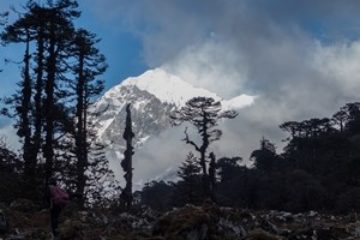
Goecha La Trek
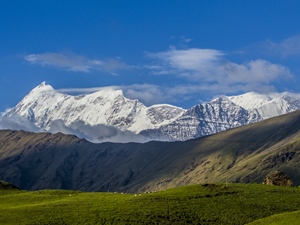
Ali Bedni Bugyal Trek

Sandakphu Trek
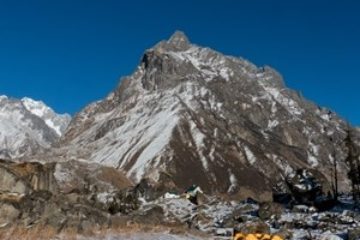
Har Ki Dun Trek
Check these high altitude summer treks.
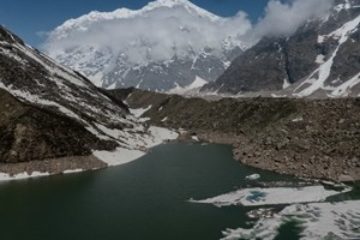
Satopanth Tal Trek

Bali Pass Trek
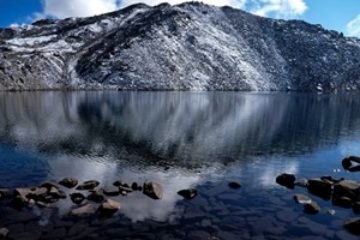
Sahastra Tal Trek
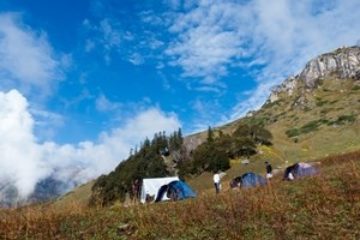
Kaliheni Pass Trek
Check these almost year around trails.
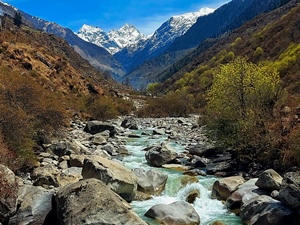
Har Ki Dun Homestay Trek
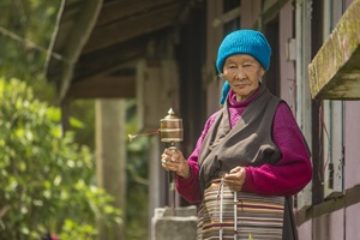
Sikkim Monastery Trail
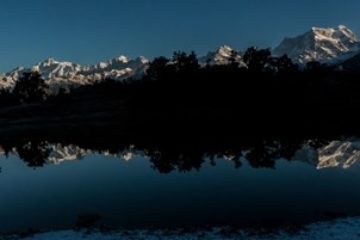
Deoriatal Chandrashila Trek

Darjeeling Tea Gardens Trek
Get insights on summer treks.
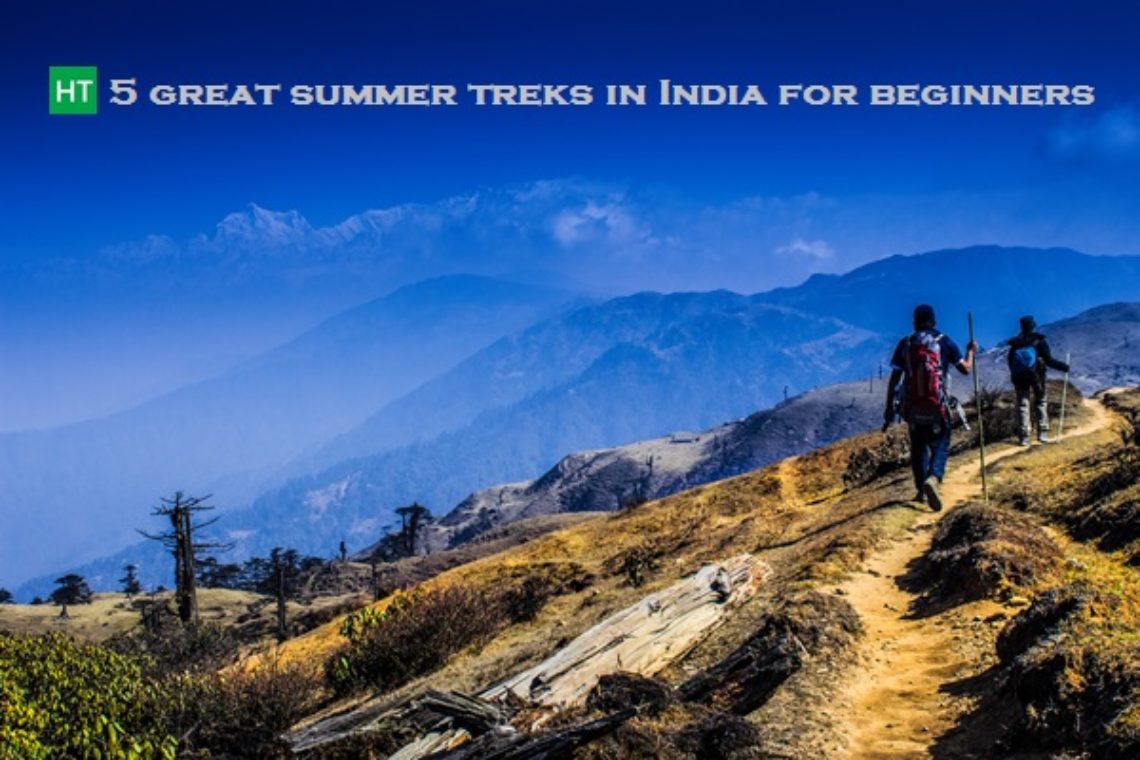
5 great summer treks in India for beginners

Best and safe treks to go with your kids in Himalayas
Himalayan destinations.
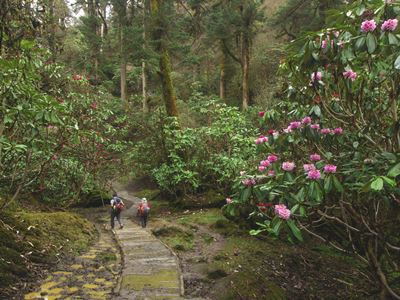
Customised Private Tours
Explore deep into Indian Himalayas
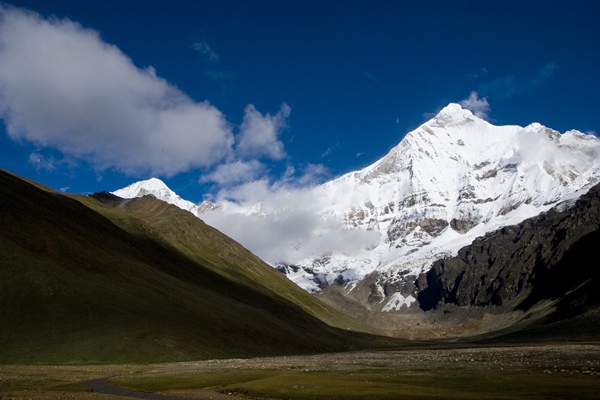
Ralam valley plus Milam valley trek over Brij Ganga Dhura pass with Nanda Devi Base camp trek
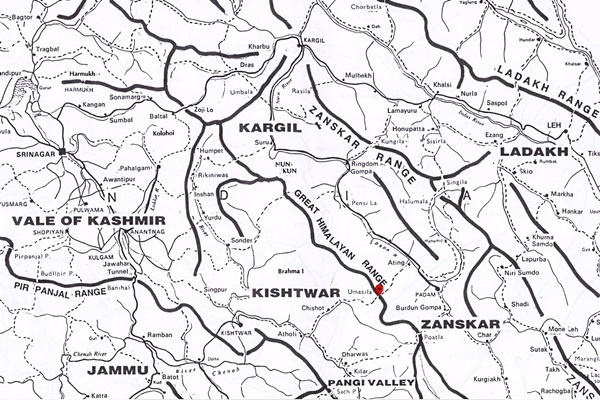
Kishtwar to Zanskar over Umasi La
Most coveted challenging trails in india.

Kalindi Khal Trek

Panpatia Col Trek
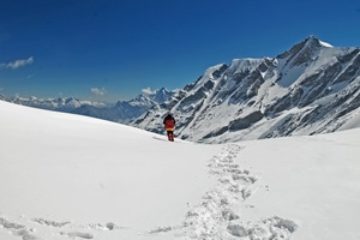
Auden's Col Trek
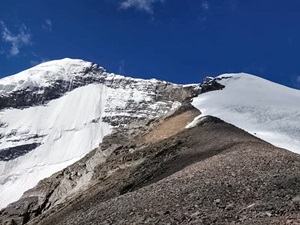
Kang Yatse 2 Peak
Check these hidden jems in himalayas.
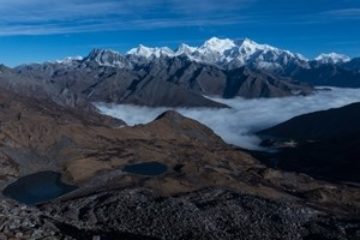
Dafeybhir Trek
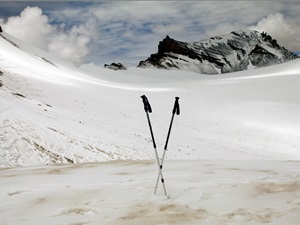
Parang La Trek
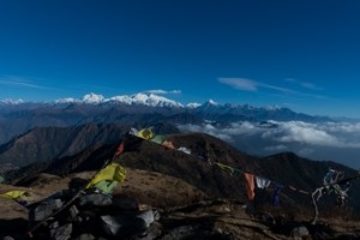

Singalila Phalut Trek
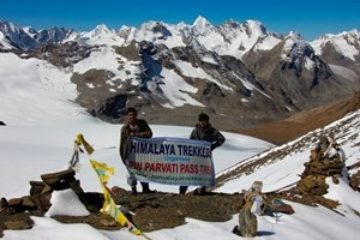
Pin Parvati Pass Trek
Learn about do it yourself (diy) treks.
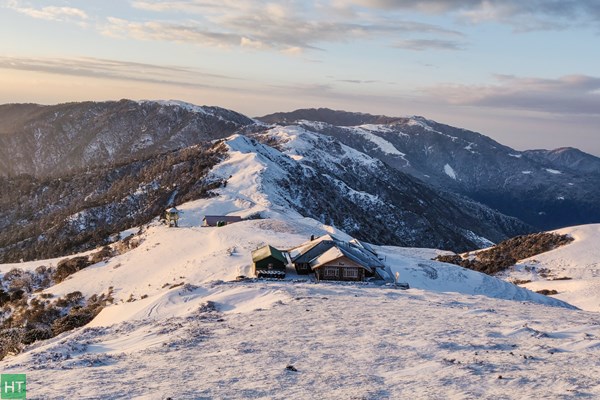
To Phalut - A Solo Journey
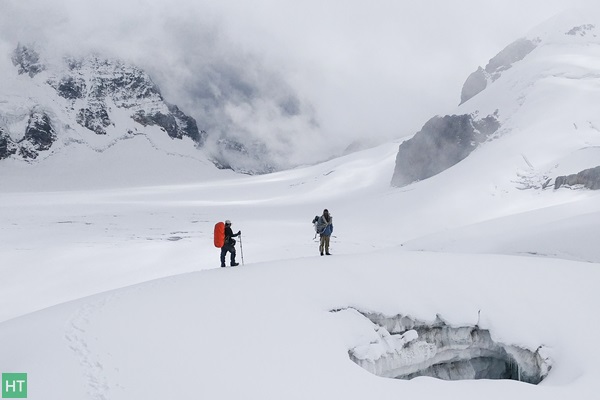
Panpatia Col Trek Blog and tips: Mythical corridor connecting Kedar and Badri
All photos are shared by HT trekkers and staff. Rights are with the respective owners.
Submit this form that we can email you all the necessary details and call you to discuss.
Tour starting date: green boxed dates indicate starting of a scheduled fixed departure tour (day 1 of our tour itinerary). please check the calendar and choose a suitable fixed departure date (green boxed) unless dates are not matching or you are looking for a customised/private trip..
Adventure Speed (P) Ltd
Adventure & Holidays Beyond Your Expectation
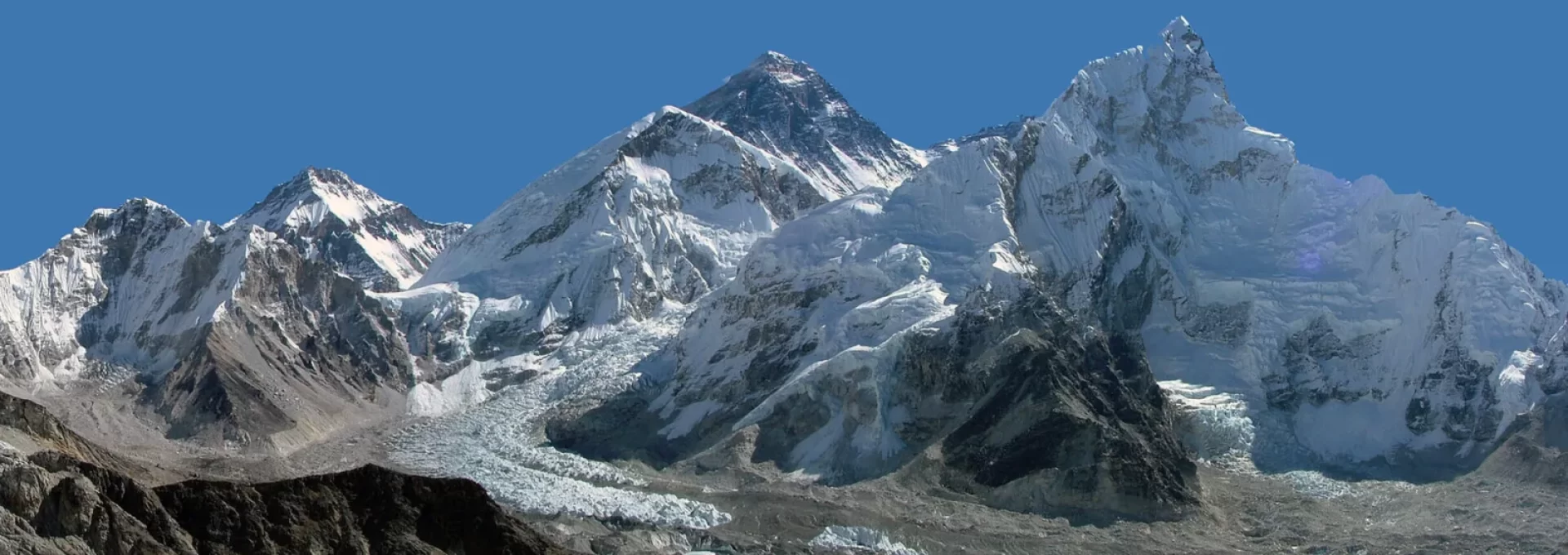
Book Your Himalayan Trip
With Us at TrekinHimalaya
Search for a trip
Destination, join our most popular trips for 2024.
Book our most popular trekking packages for the year of 2024. Join us at TrekinHimalaya for an affordable and mesmerizing experience amongst the Himalayas in Nepal. (Our popular packages are offered as group join packages provided at the best rates possible.)
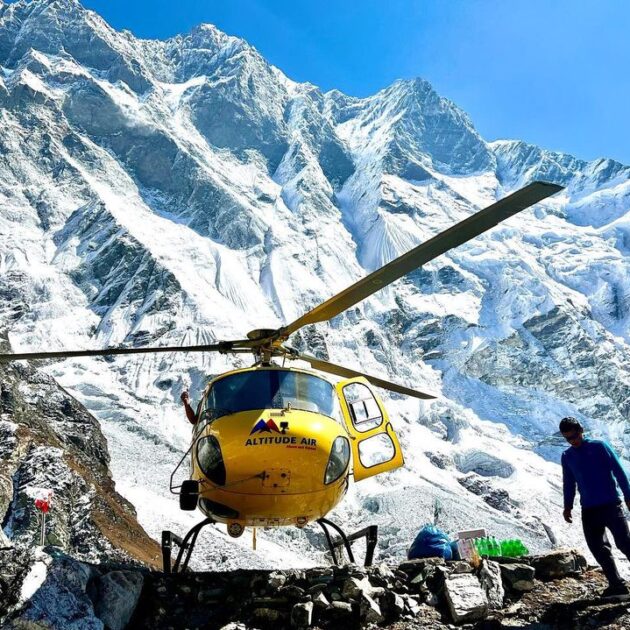
EBC & Kalapathhar Helicopter Tour
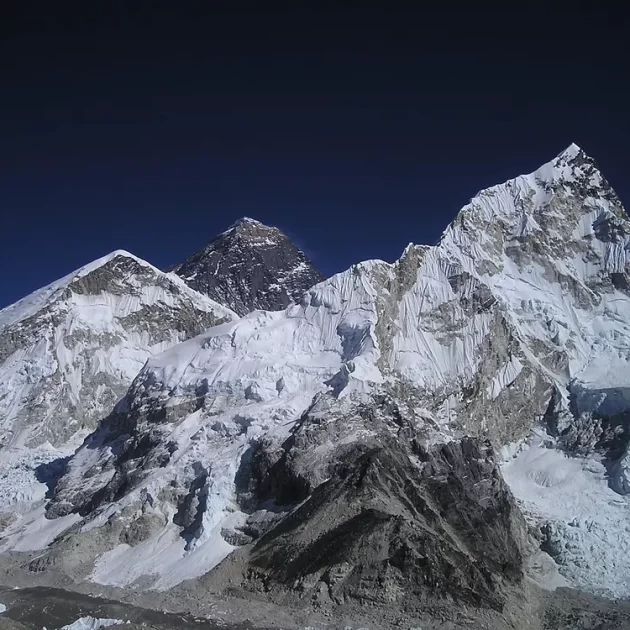
Exciting Everest Base Camp Trek
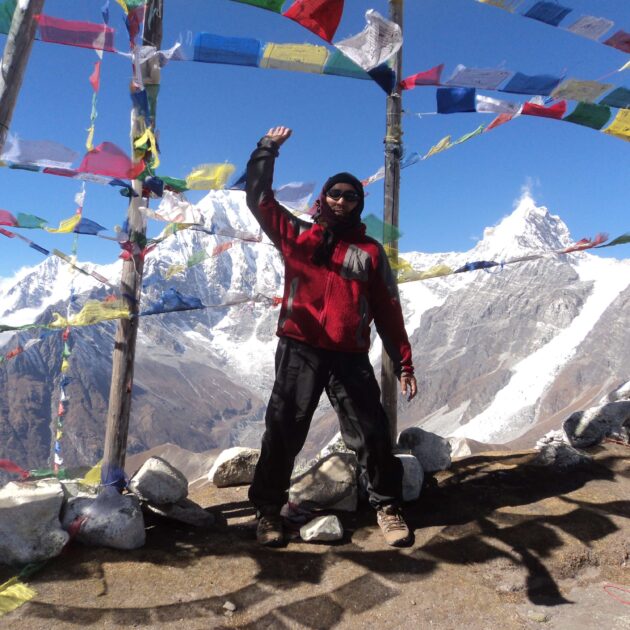
Langtang Red Panda Trek
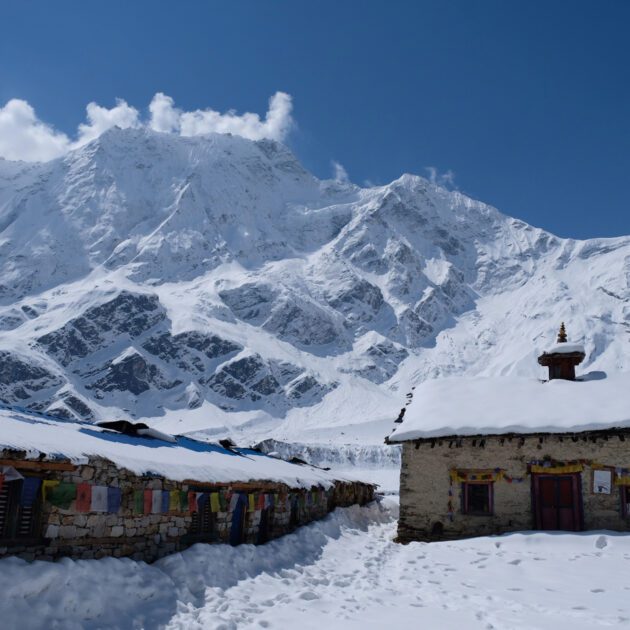
Magnificent Manaslu with Larke Pass
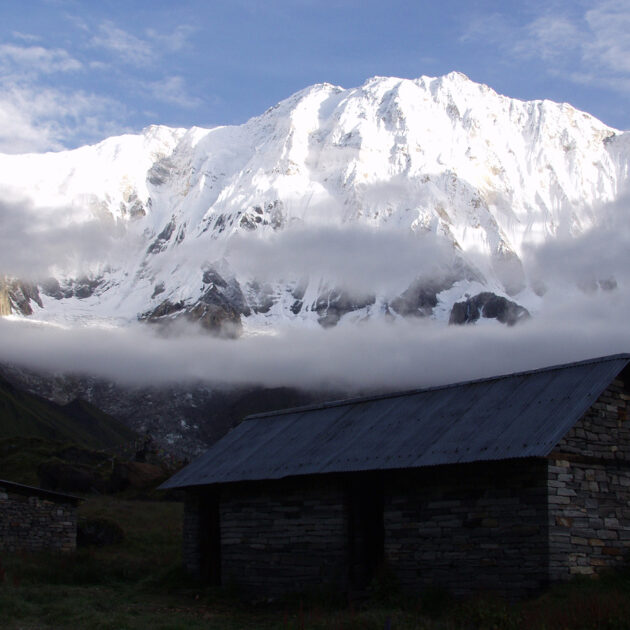
Amazing Annapurna Base Camp Trek
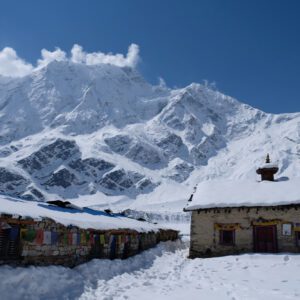
Luxury Holidays & Adventures
Buy our Luxury Trek and Tour packages in the Himalayas. Our packages are curated to provide premium accommodations, expert guides and exclusive experiences, ensuring an unforgettable journey through the awe-inspiring landscapes of the Himalayas.
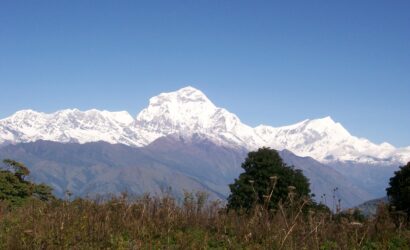
Luxury Annapurna Trek
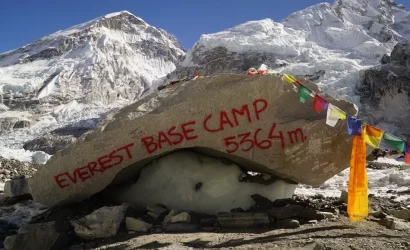
Nepal Himalayas and Heritage Tour
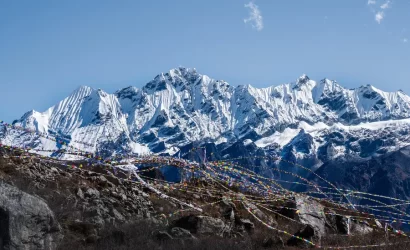
Mountains & National Parks Tour
Extreme trekking adventures.
Curated for people seeking thrilling adventures, cultural immersion, and personalized services, our Extreme Trekking packages offer thrilling adventures to veterans, including secluded island getaways to wilderness expeditions. (Each trip is tailored to your preferences, ensuring a mesmerizing and unforgettable travel experience)
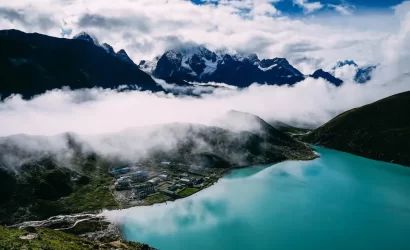
Extreme Everest with Chola Pass Trek
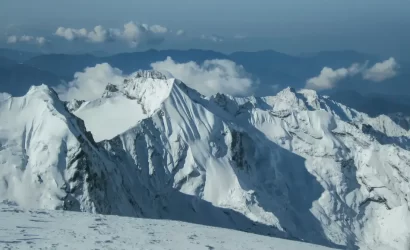
Hinku Valley and Mera Climbing
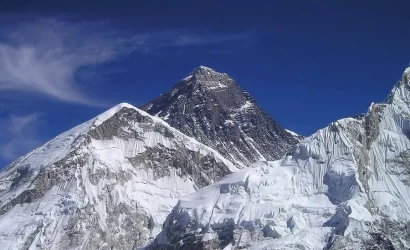
Everest Base Camp & Island Peak
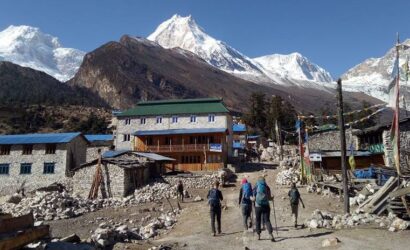
Tsum Valley and Manaslu Trek
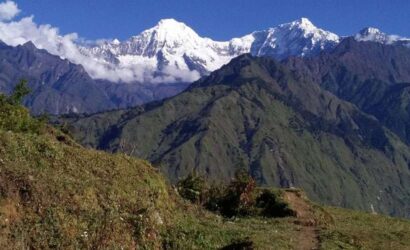
Ruby Valley Trek
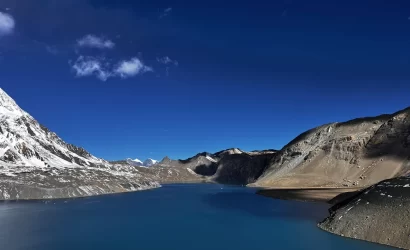
Annapurna Circuit with Tilicho Lake
Cooking & culture learning.
Explore a unique journey of culinary and cultural exploration with our Home Stay Tour. Immerse yourself in local traditions through hands-on cooking experiences and authentic cultural encounters.
Travel Articles
Check out some of our articles for more about the services we provide.
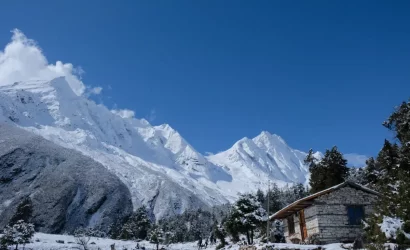
Why is the Manaslu Trek trending?
The Manaslu region is a fun and exhilarating trekking region in Nepal famous for its challenging trails and scenic beauty of the grand Manaslu mountains. The trek to the Manaslu region is currently grabbing the attention of adventure enthusiasts and trek lovers for a variety …
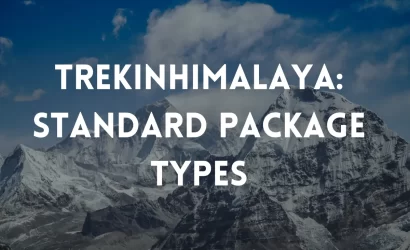
Trip Packages: Full Board Package and Half Board Package
Many trekking organizations often offer a variety of options when it comes to choosing the right package for a memorable journey. The diversity of terrains, climates, and experiences means that there is a trekking package suitable for everyone, from novice hikers to seasoned explorers. Whether …
Recommended Equipment for Extreme Adventures
Proper equipment is essential for hard/extreme adventures to ensure safety and comfort, especially in terrain as complex as the Himalayas. It is necessary to have a strong backpack, comfortable hiking boots, waterproof and windproof clothing, and other accessories such as gloves, compression vests, and eye …
- International edition
- Australia edition
- Europe edition
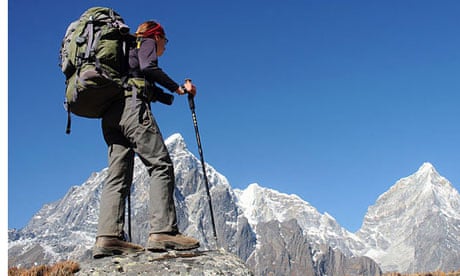
Trekking in the Himalayas: how to do it
H indu scriptures say that in "a hundred ages of the gods" you could not do justice to the Himalayas. So where do mere mortals start? Knowing where to go in an area 10 times the size of France is daunting, especially when just getting there is expensive. Everest gets most of the headlines, but the Himalayas are vast, especially when you include mountain ranges west of the Indus – the Pamir, Hindu Kush and Karakoram.
This 4,000km crescent, stretching from Kyrgyzstan to Burma, is a geography of superlatives – the highest mountains, the deepest gorges, tracts of wild forest, the rolling high plateau of Tibet plus, in Bhutan and the Indian state of Assam in the eastern Himalayas, some of the greatest biodiversity on the planet.
Then there are the people. It is true that in some areas the Himalayas are wild and barely populated, but in most there is an incredible diversity of cultures that have adapted to surviving in an environment that can be exceptionally hostile as well as incredibly beautiful.
These huge peaks are also the meeting point for three of the world's great religions: Islam in the west, Hinduism to the south and Tibetan Buddhism to the north.
It's an incredibly dynamic region. New roads and airports are making some areas more accessible, while diminishing the appeal of others, like the famous Annapurna Circuit in Nepal.
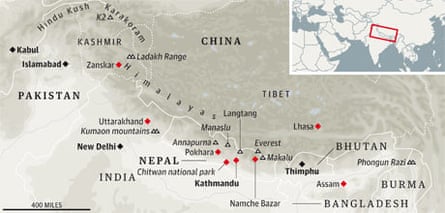
Political change has also altered horizons. Mountains along the northern border of Burma have recently become accessible for the first time in decades, while visa restrictions and unrest in Tibet have made travelling there more difficult.
Trekking is also changing. Many assume walking in the Himalayas is only for rugged types who enjoy roughing it. That was true in 1953, when Everest was first climbed and trekking tourism didn't exist. Now there are new ways to experience the Himalayas: luxury lodges for those looking to take in the views with a bit of comfort; treks that focus as much on culture as scenery; and new lodges and homestays for those who want to relax and get beneath the surface of Himalayan life.
The walking itself is usually not too difficult, no more so than in the Lake District – apart from the altitude, of course. It's the altitude, along with problems of travelling in one of the least developed regions of Asia and fears about hygiene, that put some people off. Staying healthy in the Himalayas is certainly more difficult than it is at home, but if you're used to walking and are cautious about gaining altitude then you're unlikely to have any problems. And the rewards are spectacular.
Where, when and how
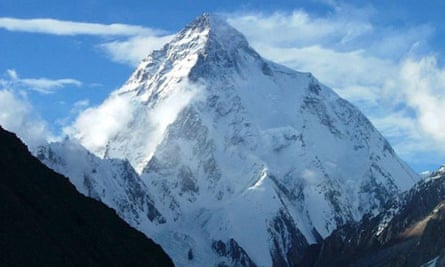
The summer monsoon is much heavier in the eastern Himalayas than it is in the west, and so the most popular trekking periods in much of India, Nepal and the region east of there are April and October. Skies tend to be clearer in the autumn, although it's colder too, but that's when Everest and other popular treks are at their busiest.
If you want to trek in the summer holidays, then look further west. Zanskar and Ladakh, largely Tibetan Buddhist in terms of its population but politically part of the Indian state of Jammu and Kashmir, are north of the Himalayan chain and enjoy much better weather in July and August. These are also the best months for K2 and the rest of the Karakoram, including Kashmir, and the Hindu Kush.
The most popular trekking areas – like Everest, the Annapurna region and Ladakh's Markha valley – have a network of basic lodges to stay in, opening up these areas to independent trekkers who don't want to carry a tent and are on a more limited budget. It's also possible to reach Annapurna, or Nepal's Langtang region, by bus, without the need for costly internal flights.
For those with a bit more to spend, there are off-the-peg itineraries from specialist travel agents in the UK. The best of these use good local outfitters and provide a guide, either western or a local who speaks good English. For those who don't want the hassle of organising transport and accommodation, this kind of trip is perfect – and for camping treks in remote areas, they're essential. You can also approach a local agent directly, which is useful if you have a group of friends who want to trek together.
- Mount Everest

Since Nepal's civil war ended in 2006, the number of trekkers visiting the Everest region has more than doubled to 35,000 a year. At the height of the season, around 60 flights land at Lukla airport each day. The Sherpa town of Namche Bazaar, the gateway to Everest base camp and used for altitude acclimatisation, now has better mobile coverage than much of Snowdonia. So if you go in peak season, expect a crowd. If you have a group of mates who all want to see Everest, most companies will organise a private tour.
World Expeditions is one of the biggest operators, running over 20 treks this year, with accommodation a mixture of camping and lodges on the classic standard trek to Everest base camp. An 18-day trek costs £1,650, which it can also arrange. Some of its autumn departures are already full, so hurry if you want to go in the diamond jubilee year of the first ascent.
If you prefer a bit more comfort, there are now two chains of luxury lodges on the way to base camp, Yeti Mountain Homes and Everest Summit Lodges . We're not talking five-star spas here, but an en suite bathroom and a hot water bottle are a big step up from standard lodges.
Specialist trekking company Mountain Kingdoms offers a 19-day package starting at £2,245 that also offers nights at Kathmandu's stunning heritage hotel, Dwarika's .
If you're looking to beat the crowds, trekking guide Bonny Masson has this advice: "If you've got the time, do the original trek the British expedition took in 1953." This started in Kathmandu, but a bus will now take you to the end of the road just beyond the town of Jiri. The trail beyond is a tougher walk than the stages from Lukla, which most people now reach by air. "You'll get a better slice of life in Solukhumbu and the trails are quieter." Alternatively you can trek out of season, in December or February, when numbers are down and the trails are quieter. But you should be prepared for lower temperatures.
Adventurous types can trek to the little-visited east face of Everest inside Tibet via the Kama valley, one of the least known but most beautiful approaches to the world's highest peak. Unlike the Nepalese side, this wild valley has hardly changed at all. In recent years, the visa situation in Tibet has been inconsistent, but that now seems to be settling down. KE Adventure Travel offers a 20-day trip out of Kathmandu, including nine days of trekking, for £2,995.
More than just trekking

Stunning views are what prompt many to go trekking, but the Himalayas is an incredibly diverse region culturally. For those who want to combine great walking with gaining an insight into how people live in such an extraordinary region, there's now a wide range of holidays offering treks combined with other activities.
Wild Frontiers , known for its stylish approach to adventure travel, now offers some excellent journeys that include trekking. It is one of the few companies that will take you trekking in Kashmir , a wonderful place to walk in the summer, and then pamper you on a houseboat on Dal Lake (10 days from £1,690). It also runs an amazing trip, sadly full for 2013, to the Hindu Kush (17 days from £2,395) that mixes a visit to the Kalash area with trekking on the Pakistan-Afghan border, along the Wakhan Corridor.
At the other end of the Himalayas, far to the east, Mountain Kingdoms is one of the first to offer a trek in northern Burma (20-day trip from £2,645) through pristine jungle and along rocky outcrops to reach the snow-capped Mount Phongun Razi. Trekking here mixes the jungle appeal of other parts of south-east Asia with the high drama of the Himalayas – and the opportunity to explore Rangoon and the temples of Bagan. And if you're looking for something a bit less strenuous, there is an alternative itinerary through the foothills.
Gentle trekking

If trekking was developed for explorer types who see disaster as a welcome change of pace, then the industry has done a great deal to broaden its appeal. Young backpackers have been wandering around the foothills of Nepal's Annapurna range for decades now, arriving in Pokhara by bus and surviving on next to nothing. World Expeditions offers an off-the-peg 11-day equivalent for newbie trekkers from £990, which takes in the pretty villages of Landruk and Ghandruk. You won't sleep higher than 2,500 metres but you'll still get stunning views of the Annapurna range and the colossal pyramid of Dhaulagiri, seventh-highest peak in the world.
The Mountain Company offers an 11-day beautiful village walk in India's Kumaon mountains in Uttarakhand. You stay in basic but homely accommodation en route, on easy trails between villages, and end with a few days at the luxurious and very relaxing Himalayan retreat Shakti 360° Leti (a 10-night package including accommodation in Delhi is £2,576pp).
Once kids get over the initial shock of the idea that a walk can last for days, not hours, trekking can be a brilliant family trip option. Exodus offers a great itinerary in Ladakh for families that takes in visits to Tibetan monasteries, rafting on the Indus and a three-day trek that crosses the Sarmanchan La, a pass that reaches 3,750m. Prices start from £1,899, including flights, and the trip is suitable for ages eight plus.
Nepal is also a great place to take children, combining a trek with a visit to Chitwan national park, close to the border with India, where they can see wildlife and ride elephants. Steve Webster is a long-time resident of Nepal who runs Escape2Nepal , a small travel company specialising in "soft" adventures that are just right for children – its 15-day family adventure trip costs £1,720pp. He also has a quiet guesthouse, Shivapuri Heights , on the outskirts of Kathmandu, away from the ever-increasing noise of Thamel, the city's tourist district.
Wild trekking
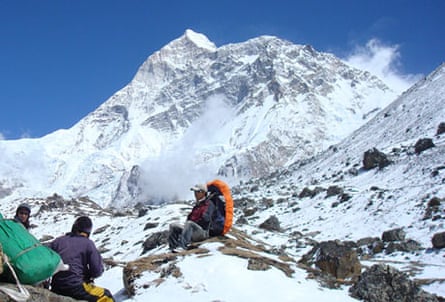
Although tourism in the Himalayas is changing fast, it's still possible to do a big trek in the wildest landscape on Earth. These really are for the hardier trekker, with weeks of camping and a tolerance for serious walking and high altitude. In Pakistan's spectacular Karakoram mountain range, there are fewer villages in the high mountains, and treks feel remote and exploratory.
The jewel in the crown is the trek to K2's base camp, taking you past some of the most beautiful peaks you've probably never heard of, like the Trango Towers and Masherbrum, before reaching Concordia, the confluence of two mighty glaciers with spectacular views of K2 itself. It takes around 15 days, walking eight miles a day, to reach base camp and leave via the Gondoro La, a pass of over 5,400m, into the beautiful Hushe valley. Previous trekking experience is essential. KE Adventure offers a 22-day itinerary starting at £2,495 .
While the Annapurna massif is as beautiful as ever, the construction of a road up the Kali Gandaki, the world's deepest gorge, to link Pokhara with the Tibetan border, has abruptly terminated interest in trekking the well-established Annapurna circuit. No one wants to trek beside a road. A new road is also being driven on the eastern side of the massif, towards the village of Manang.
Luckily for Nepal's trekking industry, the long and arduous trek around Manaslu, higher than Annapurna and just to its east, is plugging this self-inflicted wound. Mountain Kingdoms offers a slightly different route in the early part of this increasingly popular trek that makes each one of the 18 days it takes to loop around the Manaslu Circuit 's remote north side as culturally fascinating as it is spectacular. The trip costs £1,725 and is the perfect introduction to the wilder side of Himalayan trekking.
If those two aren't enough for you, then consider the Great Himalayan Trail , which traverses the length of Nepal's high mountains, broken down into 10 sections, each of which takes around two to three weeks. The Mountain Company is offering the first section – between the world's third-highest mountain Kanchenjunga and Makalu – this October from £3,195.
- Walking holidays
- Nepal holidays
- Mount Everest holidays
- India holidays
- Tibet holidays
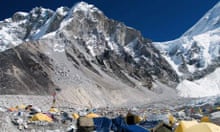
Everest: tourism and climate change provide new challenges

Autumn hiking in La Grave, France
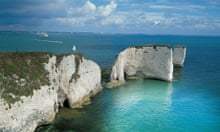
Top 10 UK coastal walks

The first successful ascent of Everest 60 years ago – in pictures

Nepalese man, 81, attempts Everest climb days after 80-year-old set record

Six of the best National Trust walks
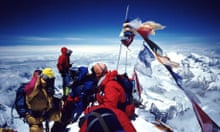
Everest climbers wait more than two hours in queue for summit
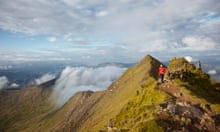
How to climb Mount Snowdon
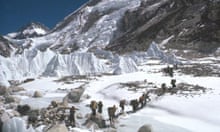
From the archive, 24 May 1963: Editorial: Everest by the West Ridge
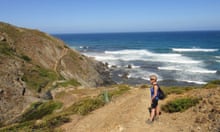
Walking Portugal's Atlantic coast
Comments (…), most viewed.
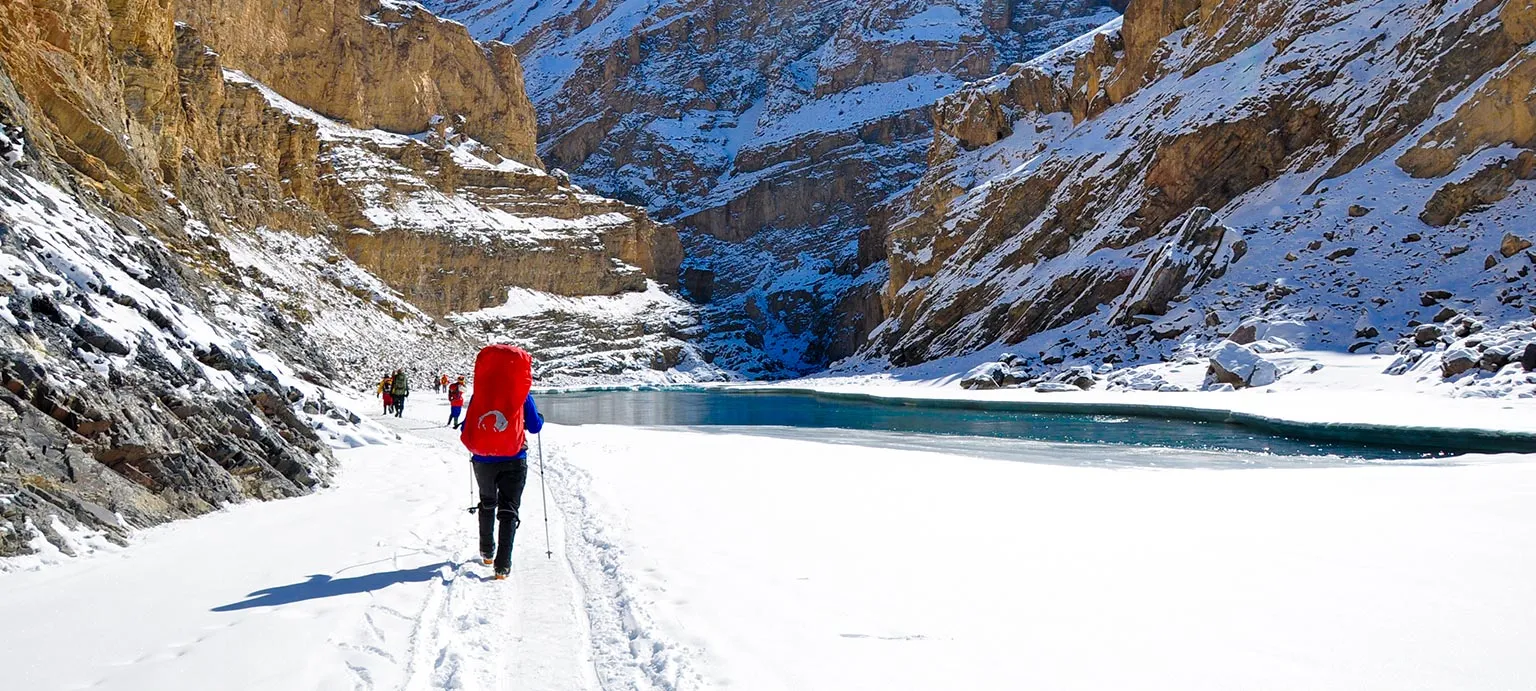
Chadar Trek Frozen River
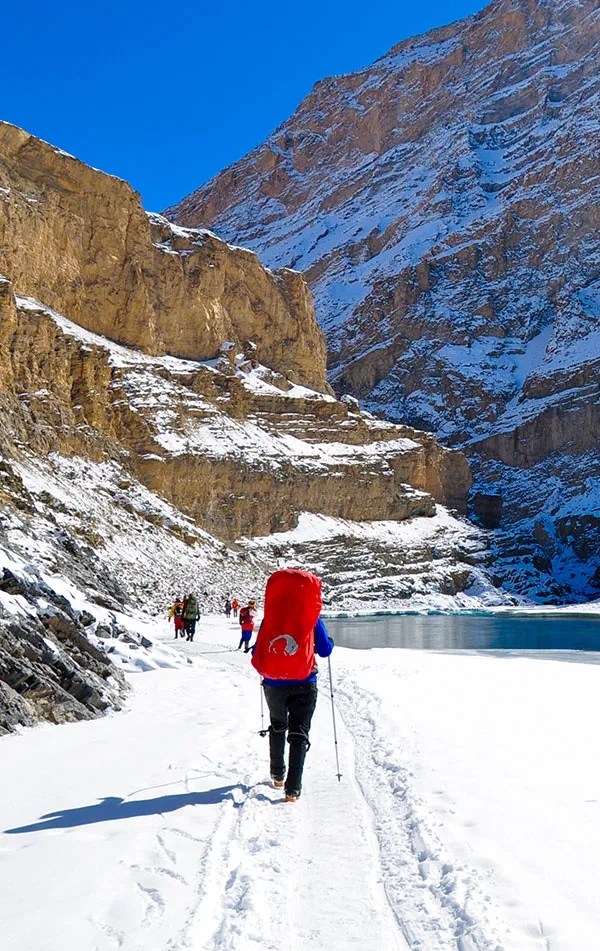
Ladakh | India
Max Altitude
Trekking Km
Help & Support
26500 /person $ /person.
- +5% GST (goods and services tax)
- Services Leh to Leh
For more information. Please complete this form.
Help & Support
Trek Name: Chadar Trek Frozen River
Adventure Type: Trekking
Base Camp: Leh
Season: Winter |
Month: January | December |
Country: India
Altitude: 11100 Ft.
Grade: Difficult
Rail Head: -
Stay: Hotel & Camping
Food: Meals while on trek
Location: Ladakh
Distance: 62 Km.
Trail Type: Point to point trail | Camping at the same location upon returning.
AirPort: Leh (Kushok Bakula Rimpochee)
Why Chadar Frozen Trek is a Must-Do:
- The Chadar Frozen Trek is renowned as one of the world's most iconic and challenging treks, offering a unique and extraordinary experience for adventurers.
- Takes trekkers through the starkly beautiful and remote landscapes of Ladakh, providing an opportunity to witness the untouched beauty of the region.
- Trekkers traverse the frozen Zanskar River, experiencing the thrill of walking on a solid ice sheet, transforming the river into a surreal frozen wonderland.
- Trekkers face extreme winter temperatures, with the mercury often plummeting well below freezing, reaching as low as -30°C (-22°F) during the night. This challenging environment adds an element of resilience to the trek.
- Provides an incredible cultural experience as trekkers pass through the remote villages and interact with the local communities along the frozen river.
- Highlights the awe-inspiring Nerak Waterfall, a significant milestone on the trek. The frozen cascade of ice is formed due to the chilling temperatures, creating a mesmerizing natural wonder.
- Features the Tibb Cave, a naturally formed overhang along the frozen river cliffs. This cave serves as a crucial shelter for trekkers, offering respite from the biting cold, wind, and a place to rest, warm up, and prepare meals.
- The trek is only possible during the frozen winter months, making it an exclusive and limited-access adventure that adds to its allure.
- For those seeking a rare and challenging experience in the Himalayas, the Chadar Trek is considered the ultimate choice, providing a blend of natural beauty, cultural immersion, and physical challenge.
The Chadar Frozen Trek , located in the northernmost part of India in the region of Ladakh, is one of the world's most iconic and challenging treks. The trek takes adventurers on an extraordinary journey along the frozen Zanskar River offering a unique opportunity to explore the starkly beautiful and remote landscapes of Ladakh, complete with breathtaking ice formations and an incredible cultural experience.
The Chadar Trek takes place in the Zanskar region of Ladakh, India. The trek begins near the village of Chilling and extends through the frozen Zanskar River. The Chadar Frozen Trek occurs during the coldest months of the year, typically from January to February when the Zanskar River freezes over. This is the only time when it's possible to undertake this unique adventure. Winter temperatures in the Zanskar region can plummet well below freezing, often reaching as low as -30°C (-22°F) during the night.
For those seeking a rare and challenging experience in the Himalayas, Chadar Trek is the ultimate choice.
Frozen Landscape
The trek takes you through a surreal frozen wonderland, where the Zanskar River transforms into a solid ice sheet. Trekking on the Chadar , or frozen riverbed, is a remarkable experience.
Nerak Waterfall
Nerak Waterfall, often referred to as Nerak Waterfall Camp, is a significant milestone on the Chadar Frozen Trek . This awe-inspiring site is a cascade of frozen ice that has formed as a result of the chilling temperatures in the Zanskar region.
Tibb Cave is another remarkable feature along the Chadar Trek . It's a naturally formed overhang in the rocky cliffs along the frozen river. This natural shelter provides trekkers with a respite from the biting cold and wind, offering a place to rest, warm up, and even prepare meals.
- Who can Participate
- Important Links
- How to Reach
- Trek Essential
Who Can Participate
Age; 12 years +.
First timers can apply; previous trekking experience is more appreciated.
The climber must be fit and have sufficient stamina to cover 5 km of distance in 30 minutes without stress.
The climber should be able to carry a 10-15 kg backpack.
Pulse rate at rest must be in between (60 to 90 beats per minute)
Blood Pressure Reading must be in between (DIASTOLIC 70 – 90, SYSTOLIC 100 - 140 mm Hg)
Respiratory rate at rest must be in between (12 to 20 breaths per minute)
Should not have Liver and kidney issues
Should not have Diabetes Mellitus, Bronchial Asthma, Heart problems, Hypertension etc
No pacemaker implant
People with the Sinus issues, Epilepsy please contact to trek coordinator before booking the trek
If your BMI is not normal, Please contact our Trek coordinator before Trek booking.
Medical & Disclaimer Form (Mandatory Documents) Click here to download Medical & Disclaimer Form
- Government Employees can avail the benefit of Special Casual Leave (SCL) when you join us for a trekking expedition. As per the rules of the Pay Commission, Special Casual Leave can be availed for up to 30 days in a calendar year for trekking/mountaineering expeditions through a registered organization. Trek The Himalayas is a registered adventure tour operator by Indian Mountaineering Foundation (IMF) and Ministry Of Tourism (MOT)
- Trekkers have to apply for leave at least 20 days before trek departure date,
- This service is exclusive to Indian government employees and is applicable only for treks within India.
- Do mail at info@trekthehimalayas to apply and mention your booked trek date and trek name.
Junior trekkers (below 15 years) should have a company of parents/guardians.
Trekkers between 15 to 18 years can come solo with the disclaimer form signed by parent/guardian.
- Medical & Disclaimer Form (Mandatory Documents) Click here to download Medical & Disclaimer Form
Exercise For Difficult
Fitness Regime For:
Calculate Your Bmi
Your BMI value is
Congratulations, your body is in good conditions!
Reporting day at Leh
- Altitude: Leh 3,500m/11,450 ft.
- Keep your woolen cap and gloves handy at Airport.
- Airport pickup is not included in the cost.
- Orientation & Briefing of the trek at 12:00 noon (Mandatory).
- Check in Hotel (10:00 am | centrally heated room |attached washroom in running condition | hot water in buckets.
- Bring a copy of your ID proof and 2 photographs. Foreigner, a copy of passport and visa.
- Keep the boarding pass with you, it will be needed for permission on the third day.
- The network is available (only post-paid).
- ATM is available.
- Visiting any very high-altitude place or pass is not advisable.
- Consumption of alcohol and smoking is strictly prohibited.
- Spend the day in the room itself to acclimatize.
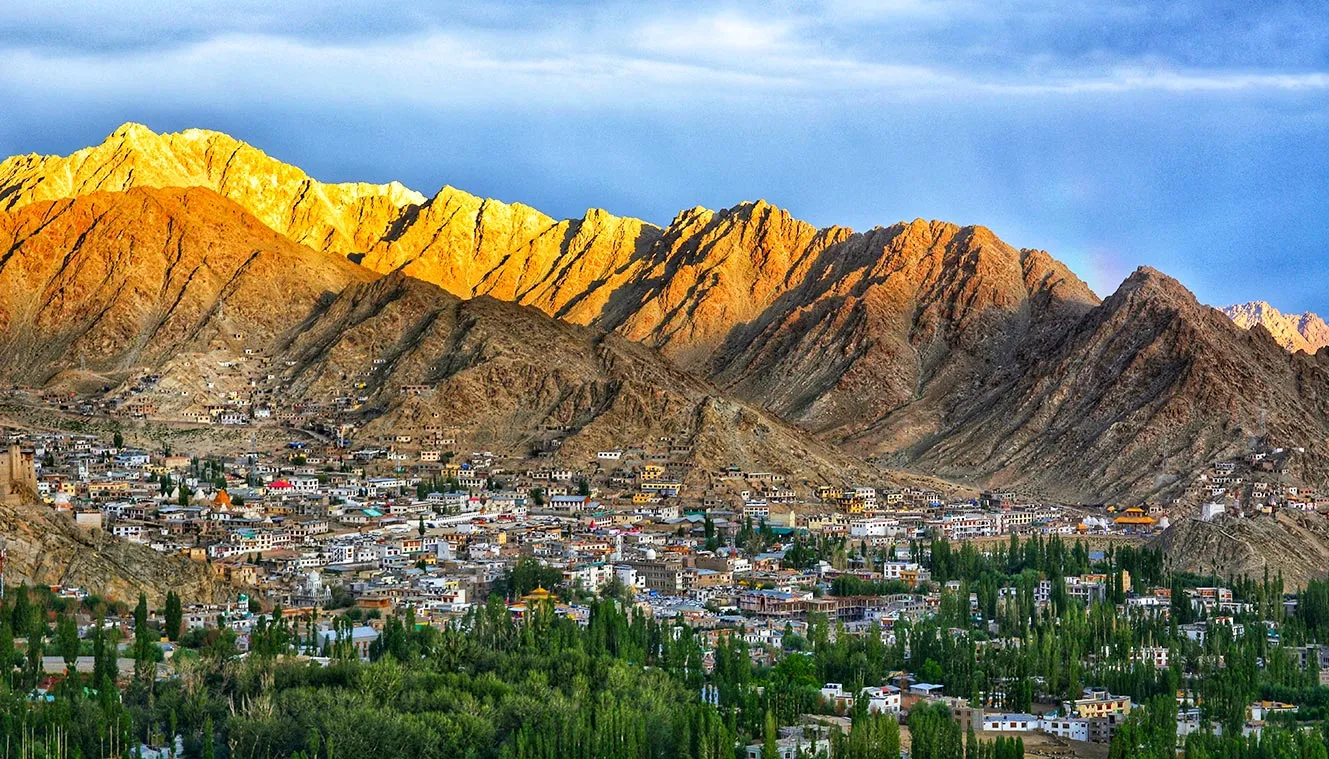
You will be landing at the Leh airport which is one of the most picturesque airports that you would come across. Just before touchdown time, you'll be greeted with the entire range of snow-capped peaks that will surely get you wonderstruck. It's important to keep your warmies handy as you'll feel the sudden drop in temperature as soon as you arrive at the Leh airport. A jacket, woollen gloves and a woollen cap is a necessity. After reaching the guesthouse you will be given enough time to relax and acclimatize to the conditions. Later in the evening, you can spend some time at the Leh market for last minute window shopping. It is very important that you get used to the cold temperature in Leh because the temperature will only tend to fall as you start walking on the frozen Zanskar. From the end of January to mid-February, the temperature can be anything between -10 to -15 degrees during the day. It is also important to keep your body hydrated by increasing the intake of fluids that will help to maintain your body temperature.
Acclimatization Day
- Rest + Acclimatisation day.
- Sightseeing included in the cost (Hall of Fame, Shey Monastery, Thiksey Monastery).
- Visit of any very high altitude place or pass is not advisable.
- Stay in Hotel | centrally heated room |attached wash room in running condition | hot water in buckets.
Keeping in mind the health problems that trekkers are facing (AMS), as per the new regulations applied, anyone doing the Chadar Trek should be atleast spending two days in Leh to get your body fully acclimatize to the weather conditions. It is irrevocable and it is important that it is strictly followed by every trekker. You can spend the day by visiting the places around the city. You can also join us while we conduct a small sight seeing session(included in the cost). It is only for 3-4 hours, covering all the major spots of Leh. It is advisable that you avoid visiting places which are at a higher altitude. Crosscheck your essentials before going to bed.
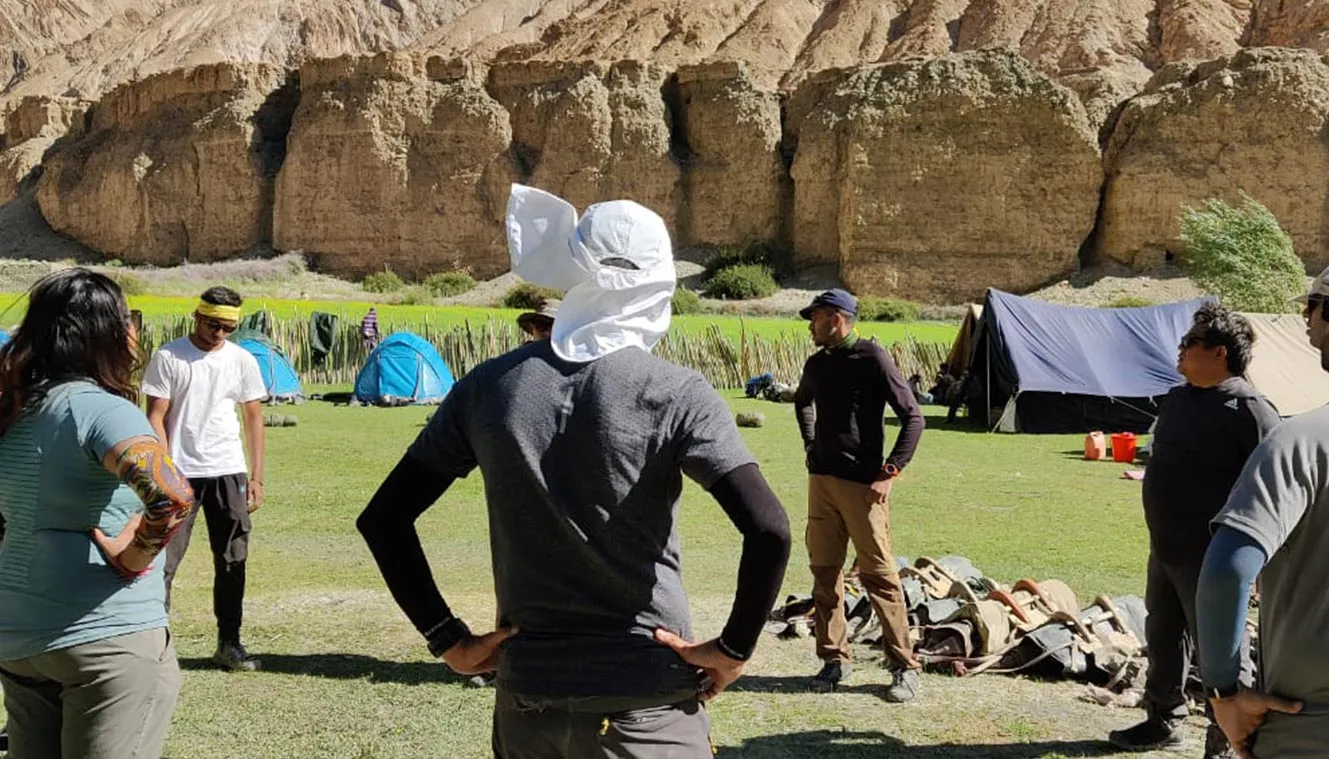
Medical test day
- Wake up early and get ready for medical tests | height & weight, blood pressure and oxygen level.
- Drive/Walk to the Government Medical camp.
- Get your Oxygen and BP reading (There is a long queue due to rush of tourists. It may take 3-4 hours depending on the rush).
- Late afternoon insurance formalities.
- Enjoy evening in Leh.
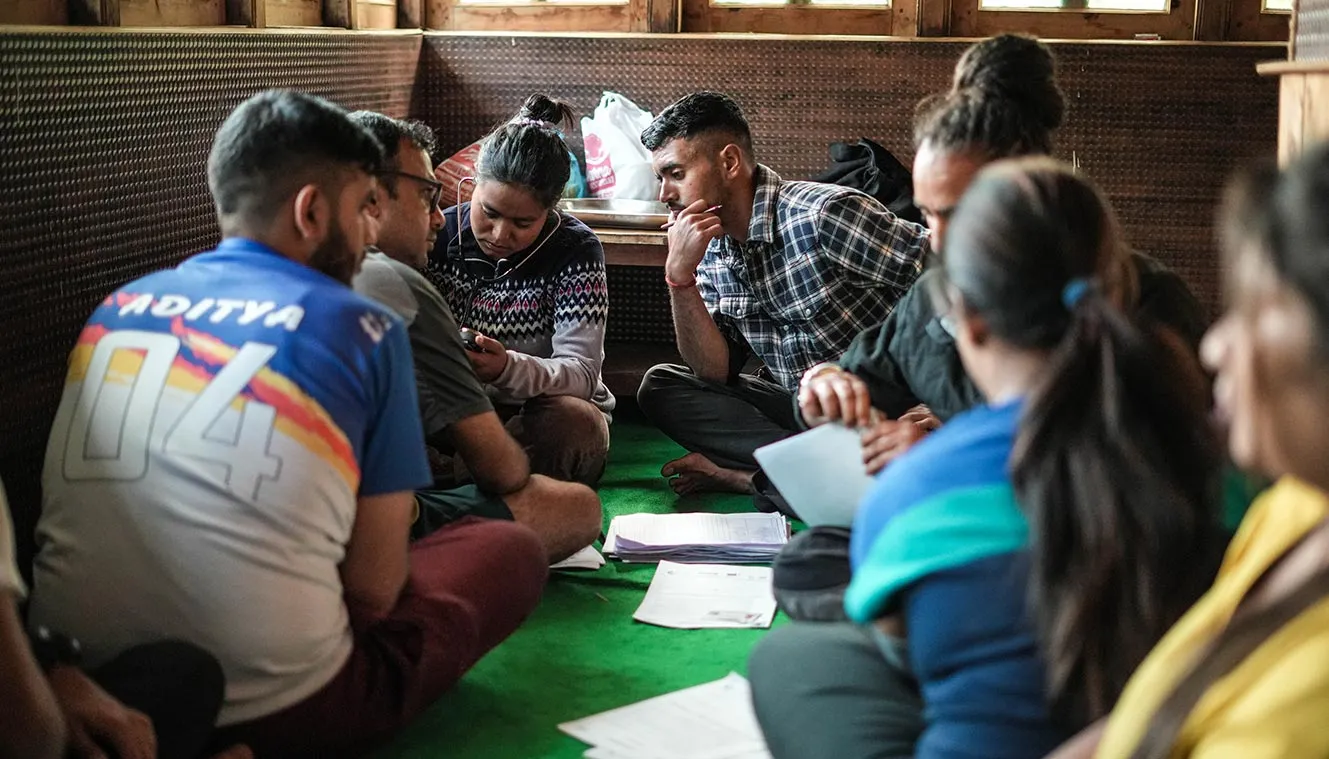
Note: Walking in gumboots will take a while, so be prepared for some slips and falls! It’s advisable to carry a small backpack which will protect your back at the time of falls.
On this day, you'll be headed to the first campsite which is Tsomo Paldar via Chilling & Shingra Koma. Shingra Koma is the most unique place of Chadar for it is placed at U bend of Zanskar. Forming a wonderful place with lots of views. Today will be one of the most scenic drives which lets you witness some of the top spots in Ladakh. Gurudwara Pathar Sahib, Magnetic Hill and the confluence of the Zanskar and Indus are some of the places where you can take a pit stop for clicking pictures. After 3-4 hours drive along the Zanskar will get you to Shingra Koma. The car will drop you right where the road ends, this will be your starting point of walking on the Zanskar.
The layer of Chadar may seem thin here, but you can also see various rock formations. Walking with gumboots on will definitely be a challenge in the initial stage. Understanding the ice patterns will take time, slowly but steadily you will know which surface is fragile and which is trustworthy. There are multiple ice surfaces that you would come across while walking on the mighty Zanskar and as you start walking you will know more about it. Planting your foot will be important in most cases, you can check for the ice for its steadiness with your walking stick before stepping on it wholeheartedly. A small and light backpack will help as you will able to manage your body weight in an effective manner. After an hour and a half of slipping, falling and trying to gather your balance you'll be reaching your first campsite at Tsomo Paldar. This will be your first experience of camping under sub-zero temperatures.
Tsomo Paldar to Tibb Cave
- Altitude: 3,350m/ 10,950 ft.
- Trek 14km | 6-7hr.
- Make sure you fill your thermos with warm water before you leave.
- Pass through a waterfall which never freeze.
- It will be sunny only around 9-10 in the morning.
- Hot Lunch on the way.
- Visit small cave, in that cave the local porters rest for the night.
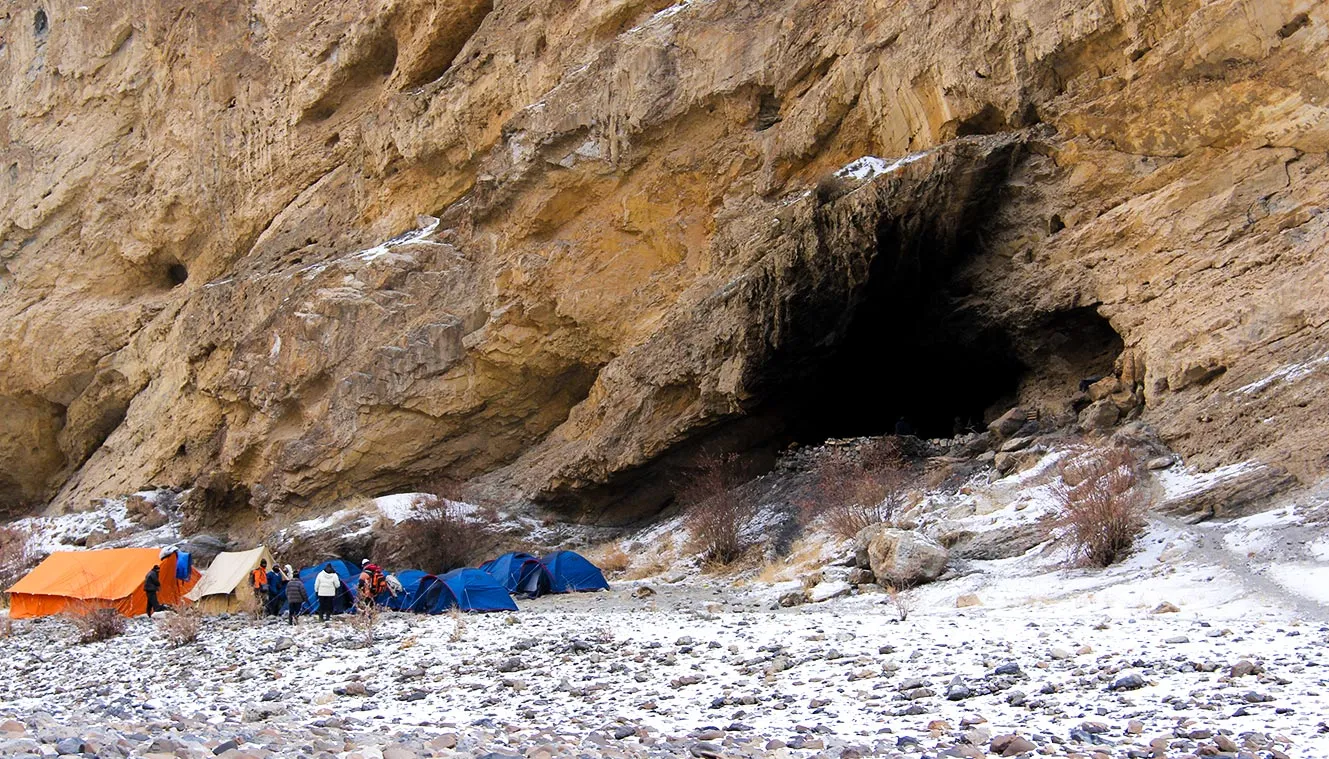
Chadar is one such trek where your not gaining altitude in quick successions. Slowly but gradually from Tsomo Paldar to Tibb Cave (6-7 hours), you will be gaining an altitude of 400ft. (Tsomo Paldar: 11,400 to Tibb Cave: 11,800) After spending a cold night in the tent at Tsomo Paldar get done with you breakfast that will re-energize your senses in the morning. The much needed hot cup of tea will be special in such frosty conditions. As you start heading to the next campsite which is Tibb Cave, this trek route has some of the most eye-catching frozen waterfalls that youll see. Waterfalls that stand frozen in time. The source of some of these frozen waterfalls is still unknown and there are a lot of myths amongst the villagers. The mighty Zanskar will be flowing all along with you on the trail and the emerald green water will have a smooth soothing You will be served lunch midway to Tibb cave. After walking for a couple of hours youll come across different rock patterns along the way which look art looks when the sun rays fall on them making their way from behind the clouds. You will be camping near the Tibb cave which is surrounded by dry sand.
Tibb Cave to Nerak
- Altitude: 3,400m/11,100 ft.
- Trek 13 km / 6-7 hrs.
- Attraction Frozen waterfall.
- Nerak is the first village of Zanskar region.
- If we reach Nerak Camp on time, we can go to Nerak village.
- Stay in tent.
As you move on to the most awaited campsite of the trek which is Nerak, the 13km long trail will take you to the most iconic landmark of the Chadar trek. i.e. The frozen waterfall. The frozen waterfall is a natures masterpiece that attracts trekkers around the world. Hot lunch will be served on your way to Nerak. By far, Nerak will be the coldest of all the campsites on the trek where the temperature goes down to as low as -30 degrees during the night. It will be important that you wear proper clothing in layers to stay safe from the biting cold. If you manage to reach the waterfall on time, there are chances of paying a visit to the Nerak Village as well. You will be camping at a distance of 15-20 minutes from the waterfall.
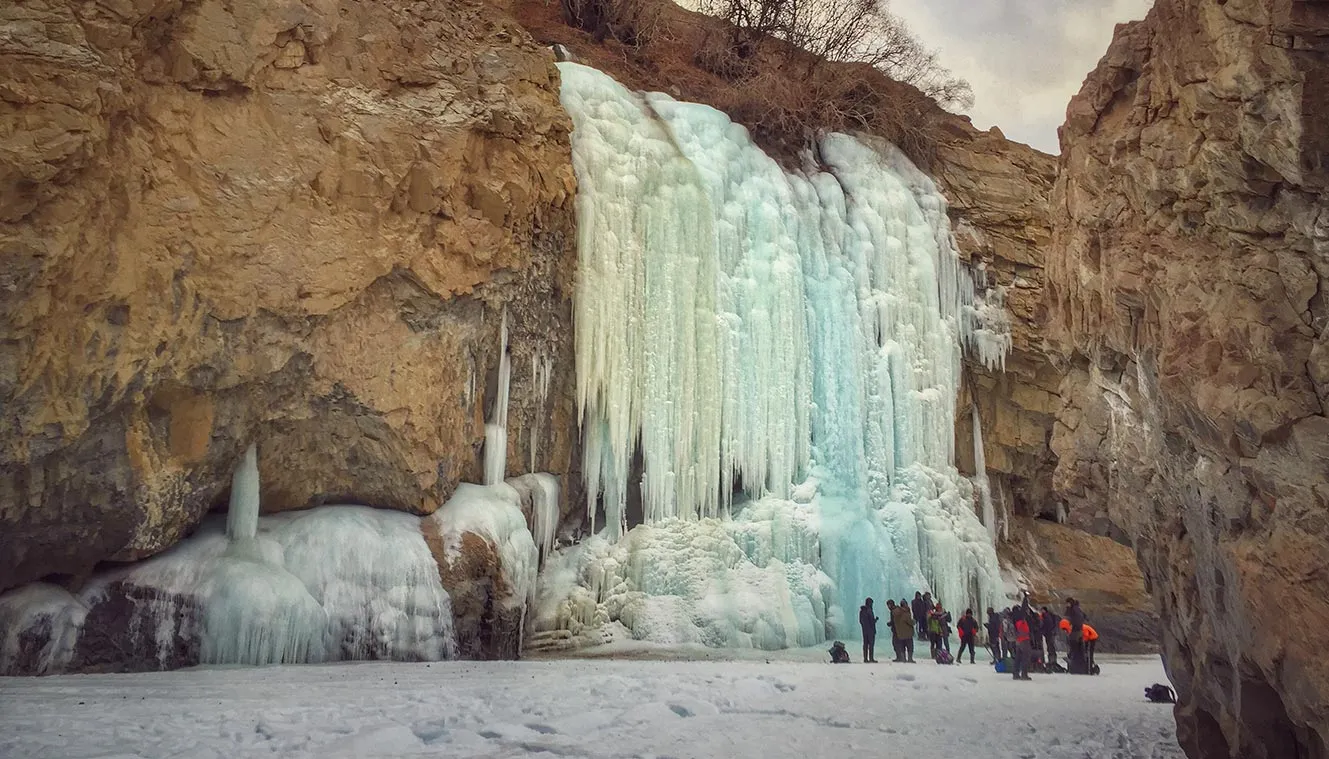
Nerak – Tibb Cave
- Altitude 3,400m/11,100 ft to 3,350m/10,950 ft
- Trek 13 km / 5-6 hrs.
You might have heard stories of how unpredictable the weather patterns can get here on the Chadar trek. There are instances where the formation of Chadar no longer exists on your way back from Nerak. In the same way, you will witness a new layer of Chadar formed at some. Even though its the same route, youll be amazed to see how different it appears while coming back. Chadar Trek is an experience of a lifetime that every trekking enthusiast should witness. And then, what if we told you that these eight days of your life are going to be some of the best days youve lived so far and that youll cherish these moments till the very end.
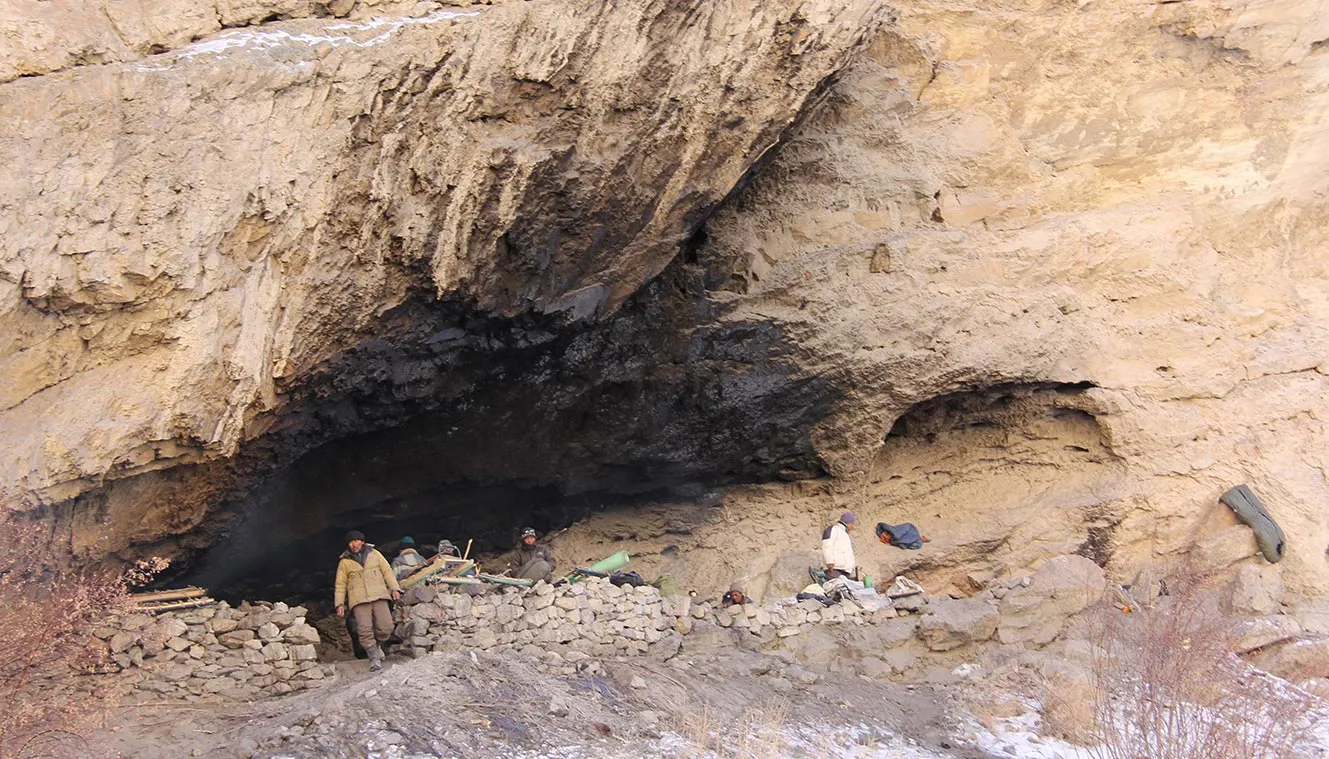
Today retrace your steps back to Tibb Cave. You get another last chance to cherish, relive and gather the memories. Wave goodbye to all the locals while you make your way back. Be careful and enjoy your last stay in tents.
Tibb Cave to Shingra Koma then Drive to Leh
- Altitude 3,350m/10,950ft to 3,150m/10,300 ft.
- Trek to Shingra Koma 17 km/ 5-6 hours.
- Drive to Leh 70 km/ 3-4 hours.
- You will reach Leh by the evening.
- Stay in hotel (Centrally heated room) (Running hot water in taps).
Again wake up early for a long walk back. It is not really retracing steps because you may observe a lot have changed. Chadar may have melted, layer of Chadar may have gotten thin, wonderful rocks are visible now. Wea ll, thats the beauty of nature and Chadar trek. Reach Shingra Koma and get ready to board on vehicles. Another bumpy ride and you will arrive in Leh.
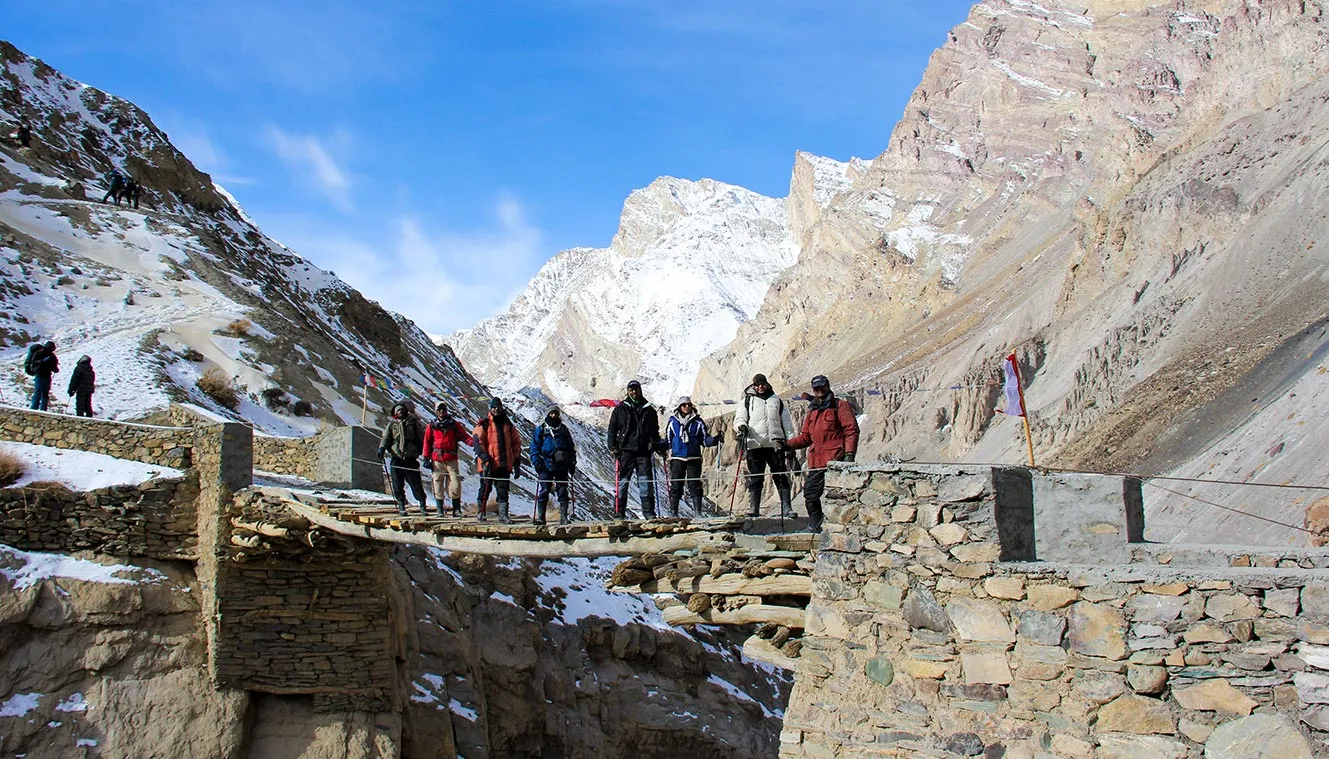
- Keep 1or2 buffer day in your travel plan
- If buffer day is not used in the travel then it can be used to Explore Leh.
- Distance, Altitude, and Trekking hours are approximate and rounded off.
- Keep the original and copy of ID proof handy
- Come one day early if planning to come by plane.
Day-1: Reporting day at Leh
Day-2: acclimatization day, day-3: medical test day.
- Wake up early and get ready for medical tests.
Day-4: Leh to Shingra Koma drive & Trek to Tsomo Paldar
Day-5: tsomo paldar to tibb cave, day-6: tibb cave to nerak, day-7: nerak – tibb cave, day-8: tibb cave to shingra koma then drive to leh.
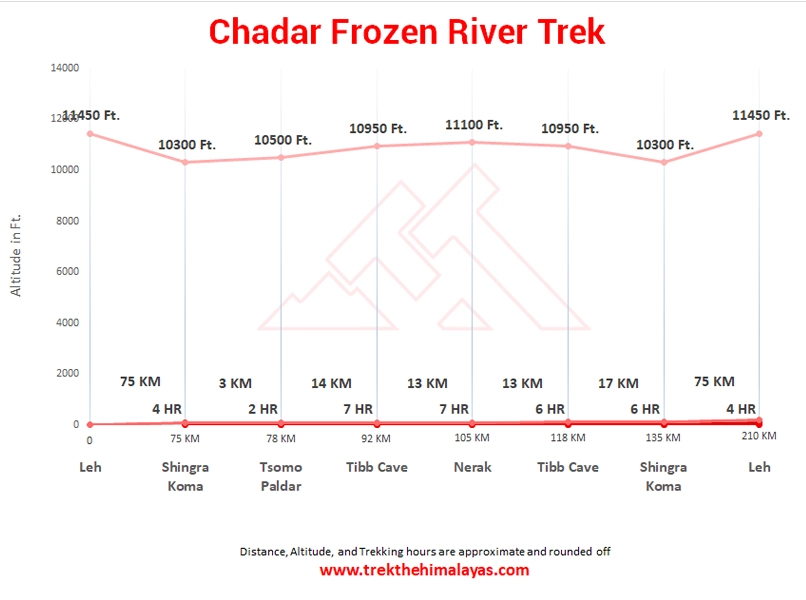
Medical & Disclaimer Form (Mandatory Documents) Click Here.
How To Reach
It is essential for everyone to arrive at Leh (01:00 pm)
The only way to travel is to fly to Kushok Bakula Rimpochi Airport located in Leh. It is just 4 km away from the main city. The airport is well connected to Delhi and also receives flights from Mumbai, Srinagar, Jammu, Chandigarh and other general destinations in India. Even international travellers can fly directly from major cities like Kolkata, Mumbai and Delhi.
It's quite convenient to secure a cab from outside the airport to reach our hotel. Alternatively, you can inform your coordinator to arrange a cab for you. Upon booking the trek, your trek coordinator will furnish you with the hotel details.
Travelling by both the road routes, the Manali-Leh Highway and Srinagar-Leh Highway, is not possible since they are not open in the snowy winters of Ladakh.
The Manali-Leh and Srinagar-Leh highways are generally closed by October-November
For your return journey from Leh, you have to choose only air transport options. Please ensure an early check-out in the morning, as all flights operate during the morning hours.
.webp)
1. Accommodation (as per the itinerary):
- Guest house (centrally heated room)(attached washroom) in Leh on Day 1, Day 2, Day 3 & Day 8 (twin sharing basis, triple in very rare cases)..
- Camping during the trek (Day 2 to Day 6).
2. Meals (Veg + Egg):
- All meals while on trek. .
- Day 4 breakfast to day 8 lunch.
3. Support:
- 1 Versatile base camp manager: handles communication and deploys extra manpower in emergencies.
- 1 Mountaineering & First aid qualified professional expedition Leader.
- 1 Experienced high altitude chef.
- Local experienced guides (Number of guides depending on the group size).
- Enough support staff.
4. Trek equipment:
- Sleeping bag, Sleeping liners (if required), Mattress, Utensils.
- 3 men all season trekker tent (twin sharing), Kitchen & Dining tent, Toilet tent.
- Camping stool, Walkie talkie.
- Ropes, Helmet, Ice axe, Harness, Gaiters & Crampon (if required).
5. First aid:
- Medical kit, Stretcher, Oxygen cylinder, Blood pressure monitor, Oximeter, Stethoscope.
6. Transportation (as per the itinerary):
- Leh (Guest house) to trekking point (Day 4).
- Trekking point to Leh (guest house) (Day 8).
7. Clock room service at Leh. 8. Mules/porters to carry the central luggage. 9. All necessary permits and entry fees, Upto the amount charged for Indian. 10. Services from Leh to Leh.
1. Food in Leh. 2. Insurance (Mandatory). 3. Any kind of personal expenses. 4. Pickup and drop from Leh airport. 5. Mule or porter to carry personal luggage. 6. Emergency evacuation, hospitalization charge or etc. 7. Anything not specifically mentioned under the head Inclusion. 8. Any additional cost due to the final decision incurred by the Administrative. 9. Pre Medical Check-up and Rescue fee, Wildlife/environmental charges, ALTOA NOC, and entry fees upto 6K to 8 K paid to the authority on the spot.
Things can be provided on demand and availability (participant has to pay extra for these things).
1- Gamow/PAC HAPO Bag (Portable Hyperbaric Bag) - is a unique, portable hyperbaric chamber for the treatment of acute mountain sickness (AMS), also known as altitude sickness.
2- AEDs (Automated External Defibrillators) - are portable life-saving devices designed to treat people experiencing sudden cardiac arrest, a medical condition in which the heart stops beating suddenly and unexpectedly.
Cancellation terms:
Cancellations prior to 25 days from the start of the Trip
Refund options
- 5% deduction of trek fee
- 100% cash voucher for any trip till one year
- Transfer your trek (any trek, any date) to your friend
Cancellation between 24 days and 15 days to the start of the Trip
- 30% deduction of trek fee
- 100% cash voucher for same trip till one year
- 85% cash voucher for any trip till one year
- Transfer your trek (same trek, any date) to your friend
Cancellation between 14 days and 10 days to the start of the Trip
- 50% deduction of trek fee
- 80% cash voucher for same trip till one year
- 70% cash voucher for any trip till one year
- Book the same trek, in the same season, with any other batch
Cancellation less than 9 days to the start of the trek
- No cash refund
- 20% cash voucher for the same trip till one year
- 10% cash voucher for any trip till one year
- Transfer your trek (same trek, same date) to your friend
Note- If a booking is made using a voucher or discount code, the policies related to vouchers and discounts cannot be modified.
In the unlikely event that TTH cancels a trek prior to the scheduled departure date:
While it is extremely rare for TTH to cancel a trek, we understand that unforeseen circumstances or natural disasters may occasionally require us to do so before the scheduled departure. These circumstances could include continuous rain or snow, thunderstorms, snowstorms, landslides, floods, earthquakes, or any other natural calamity that poses a risk to the safety of our trekkers. Additionally, unforeseeable events such as local riots, curfews, pandemics, lockdowns, government orders, or any similar situations that compromise the safety of the trekking experience may also necessitate a cancellation.
In the event of such a cancellation, TTH will provide you with a voucher equivalent to the amount you paid for the trek. This voucher can be redeemed for any of our treks within the next year, allowing you to still enjoy an adventure with us at a later date.
The issuance of a voucher is not applicable in situations where you are required to descend from the trek for any reason. The trek leader may make the decision to send you down from the trek due to factors such as insufficient fitness level, symptoms of Acute Mountain Sickness (AMS), high blood pressure, exceeding the designated turn-around-time, health concerns, or if you are found smoking, drinking, or violating the rules set for the trek. In such cases, the provision of a voucher does not apply.
In the rare event that TTH shifts a trek:
We would like to emphasize that weather conditions in high-altitude areas are highly unpredictable and can undergo sudden changes at any time, irrespective of the day. Additionally, circumstances beyond our control, such as natural disasters, political unrest, pandemics, and lockdowns, may impact the feasibility of conducting a trek. In cases where we are unable to proceed with an event due to such circumstances that are beyond our direct control, we will make every effort to provide you with an alternative trek that is safer and more suitable.
In such situations, we will issue a voucher to offset the cost difference between the originally scheduled trek and the alternative trek. This voucher can be redeemed at any time within one year from the date of issue. Please note that a refund fee or reimbursement of the cost difference is not applicable in these cases.
- Change of trek batch is dependent on the availability of seats in the batch
- In case of transferring a trek to a friend, he/she should satisfy all the mandatory requirements put forward by TTH
- TTH holds the right to change/cancel the policies, without prior notice
- Cash refund is applicable only in case of bookings made without using any promotional offer code or vouchers
Cash Voucher Terms:
- This is a non-transferable voucher
- The voucher cannot be merged with any other offer of Trek The Himalayas
- The voucher is valid for Trek booked directly with Trek The Himalayas in India
- To avail the voucher please use your register phone number or e-mail id
- All the other Terms of booking a trek with Trek The Himalayas are applicable to the voucher
- Trek The Himalayas holds rights to add/remove any of the Terms and Conditions without prior notice
Itineraries are based on information available at the time of planning and are subject to change. "Trek The Himalayas" reserves the right to change expedition dates, people or itineraries as conditions warrant. If a trip must be delayed or the itinerary changed due to bad weather, road conditions, transportation delays, government intervention, airline schedules, sickness, or other contingency for which TTH or its agents cannot make provision, the cost of delays and/or other changes are the responsibility of the participant. TTH reserves the right to decline, or accept, any individual as a trip member for any reason whatsoever.
Trek Essentials
PDF Of Trek Essential Download
Frequently Asked Questions(FAQ)
How to register/create an account with tth.
To register with TTH, visit our website - www.trekthehimalayas.com and create your account. To create your account you will need to use your email address and fill in all the details, set your unique password and your account is ready to use.
How to book a trek?
- To book a trek with TTH, you first need to register with us and create an account.
- Choose the trek that you want to do and click on available dates.
- You will land at the login page, fill in the required details.
- Add Participants, choose add-on services click on the Pay now button, choose your preferred payment method, and make the payment. TTH accepts multiple payment options, including credit/debit cards, net banking, and UPI.
- You will receive a confirmation email from TTH with all the necessary details about the trek, including the meeting point, transportation, accommodation, and other important instructions.
Made a payment but did not receive any confirmation.
please send an email to us at [email protected] or reach out to the numbers provided in the Help and Support section of your Trek Page. We will ensure that your issue is promptly resolved.
How to book off-load luggage and transportation?
To book services such as off-load luggage and transportation, you can find them listed as add-ons. These additional services can be booked at the time of your initial booking. If you miss booking add-ons during the initial reservation, you can log in anytime and easily book 4 days before the departure date add-ons through the platform.
If I have booked the wrong trek or date, how can I make changes?
In such a situation, please log in to your account and transfer your trek or date to the desired one within 12 hours or drop us an email at [email protected] 10 days before the departure date of the trek. After the initial 12-hour period, any changes will be processed according to the cancellation policy.
I am a beginner and confused which trek to book.
We recommend visiting our "Suggest Me a Trek" page. By filling out the form, our experts will contact you with the best possible trek options based on your preferences and experience level. Alternatively, you can reach out to us via email at [email protected] or give us a call using the numbers provided on our website for personalized assistance and recommendations.
How is family trek different from regular trek?
Family treks differ from regular treks by focusing on ease of difficulty, offering shorter durations for younger participants, Kid-friendly and easily digestible foods, child-friendly activities, maintaining a higher guide ratio for diverse age groups, and implementing additional safety measures for families.
Ideal treks for children.
Family Trek with Kids recommendation Only Dayara Bugyal and Chopta Chandrashila Trek.
Minimum age for children to trek with TTH.
Minimum age for TTH treks is typically 7 years, though this may vary depending on the specific trek.
Can we take children to high altitudes with their guardian?
Yes, you can take a kids to a high-altitude trek with a parent. Discuss with a trek expert before booking a trek.
Can we send kids without Parents/guardian?
Medical & Disclaimer Form (Mandatory Documents) Click here to download medical and disclaimer form
How to prepare a child for a high altitude trek?
Physical Fitness: Ensure your child is physically fit. Engage them in regular exercise, outdoor activities, and hikes to build stamina and endurance. Hydration: Emphasize the importance of staying hydrated at high altitudes. Encourage your child to drink water regularly, even if they don't feel thirsty. Proper Nutrition: Provide a well-balanced diet with sufficient carbohydrates for energy and foods rich in iron to prevent altitude sickness. Adequate Sleep: Ensure your child gets enough sleep in the days leading up to the trek. Quality rest is crucial for altitude adaptation. Educate on Altitude Sickness: Teach your child about the symptoms of altitude sickness, such as headache, nausea, and dizziness. Encourage them to communicate any discomfort immediately. Appropriate Clothing and Gear: Dress your child in layers to adjust to changing temperatures. Ensure they have appropriate trekking gear, including sturdy footwear. Positive Mindset: Foster a positive mindset. Encourage your child, and let them know it's okay to take breaks when needed. Medical Check-Up: Schedule a medical check-up before the trek to ensure your child is fit for high-altitude activities. Consult with a healthcare professional about any potential health concerns.
Kind of food will be served during the trek for children.
TTH takes special care to provide wholesome and nutritious food for children on treks. Here are some of the foods that are typically served for children: Breakfast: For breakfast, TTH serves a variety of options like porridge, cornflakes, bread, butter, jam, honey, boiled eggs, omelettes, and pancakes. Children can choose from these options to fuel themselves for the day's trek. Lunch: For lunch, TTH serves lunch which includes rotis, vegetables, rice, dal, and salad. The rotis are usually made fresh on the trek and are a good source of carbohydrates. The dal and vegetables provide protein and other essential nutrients. Snacks: TTH provides healthy snacks like fresh fruits, dry fruits, energy bars, cookies, and biscuits to keep the children energized throughout the day. Dinner: For dinner, TTH serves a hot and wholesome meal which includes soup, rice, dal, vegetables, and a non-vegetarian dish (if requested in advance). Children can also choose from a variety of desserts like custard, jelly, and fruit salad. Dietary requirements: If a child has any special dietary requirements, TTH can cater to those needs as well. For example, if a child is lactose intolerant or allergic to nuts, the kitchen staff can make arrangements to accommodate those requirements.
How to choose the right trek?
Choosing the right trek for a beginner can be a bit overwhelming as there are many factors to consider such as distance, elevation gain, terrain difficulty, weather, and time of year. Here are some tips that can help you choose the right trek for a beginner:
1. Determine fitness level: Assess the fitness level of the beginner to understand their physical capabilities. This will help you select a trek that is challenging but not too difficult.
2. Choose a well-traveled trail: A well-traveled trail will have more amenities such as signposts, water stations, and shelter. It is also safer as there will be other hikers on the trail.
3. Consider the length of the trek: For beginners, it is recommended to start with a shorter trek that can be completed in a day or two. This will help them get acclimatized to trekking and build their confidence.
4. Look for gradual elevation gain: Choose a trek with a gradual elevation gain rather than steep ascents. This will make the trek easier and more enjoyable.
5. Check the weather: Check the weather forecast before selecting a trek. Avoid treks during the monsoon season or winter when the trails can be slippery or dangerous.
6. Research the trail: Read about the trail to get an idea of the terrain, altitude, and difficulty level. This will help you select a trek that is suitable for the beginner.
7. Consult with an expert: If you are unsure about which trek to choose, consult our trek expert Mr. Nitin (+91 70600 59773) between 10 AM to 6 PM (Tuesday - Friday). Mr. Nitin will provide you valuable advice and guidance.
Overall, it is important to choose a trek that is enjoyable, challenging but not too difficult, and suitable for the beginner's fitness level and experience.
Can a beginner choose a tough trek?
It is not recommended for a beginner to choose a difficult Himalayan trek. Trekking in the Himalayas can be physically and mentally challenging, especially if you are not used to the high altitude, steep slopes, and rugged terrain. Choosing a difficult trek without the proper experience, fitness level, and preparation can be dangerous and put you at risk of altitude sickness, injury, and other hazards.
If you are a beginner, it is recommended to start with an easier trek and gradually build up your skills and experience. This will help you understand the challenges of trekking in the Himalayas, and also prepare you physically and mentally for a more difficult trek in the future. It is also important to choose a trek that matches your fitness level, experience, and interest.
What is the age limit for a beginner trekker?
There is no specific age limit for a beginner trekker. However, it is important to consider your physical fitness, health condition, and personal interests before embarking on a trek. Trekking in the Himalayas can be physically and mentally demanding, and requires a certain level of physical fitness and endurance.
If you have any pre-existing medical conditions or are above a certain age, it is recommended to consult with a doctor before embarking on a trek. It is also important to listen to your body and take breaks as needed during the trek to prevent exhaustion or injury.
If I am solo, can I join the trek in a group?
Yes, you can join the trek. We have fixed departure groups where you can simply book your trek and we will take care of curating a group.
How does my family get updated about my Trek?
Before you start the trek, it is recommended that you make all the necessary phone calls as during the trek you may or may not receive network coverage, once you come back to the Base Camp, you can reconnect with your family via phone once again. You can share your trek coordinator contact detail with your family members to get the latest updates about your trek batch.
What food can I expect?
At TTH, we provide wholesome and nutritious meals during the trek. The food is vegetarian and includes a variety of dishes such as rice, dal, vegetables, chapati, paratha, pasta, noodles, and soup. We also offer snacks such as biscuits, and salty, and dry fruits during the trek. Special dietary requirements such as vegan, gluten-free, or Jain food can also be arranged if informed in advance.
I am allergic to some foods.
If you are allergic to some foods, you need to let us know in advance so that we can make arrangements accordingly.
How safe is trekking with TTH?
TTH is a trekking company that prioritizes the safety of all its participants, including women trekkers. They have a comprehensive safety system in place, which includes a dedicated team of experienced and trained trek leaders and support staff who are equipped to handle emergency situations and provide first aid.
TTH also takes specific measures to ensure the safety and comfort of women trekkers. They have a separate tent accommodation for women trekkers, female trek leaders, and support staff. They also provide separate toilet facilities for women and encourage a safe and respectful environment for all trekkers.
Moreover, TTH has a strict policy against any kind of harassment and has a zero-tolerance policy towards such incidents. They have a designated Internal Complaints Committee (ICC) to investigate and address any complaints related to harassment or misconduct. Overall, TTH has a good reputation for safety and responsible trekking practices, and women can feel comfortable and safe while trekking with them.
How TTH will manage if I am the only woman in the group?
In case you are the only women in the group, we provide a single sleeping arrangement. Also, during the trek, the trek leader will always remain by your side to provide optimum safety and reassurance.
How can I know that other women are in the batch?
You can reach out to the trek coordinator to inquire about the number of female trekkers and their respective states who have booked the trek. Please note that the trek coordinator cannot disclose personal details of any trekker. Once you've confirmed your booking, a WhatsApp Group will be created for all the trekkers in your batch. This allows you to connect with fellow trekkers before the trek begins.
Can I know in advance, which trek is led by a women Trek Leader?
While many of our treks are led by female trek leaders, however, it is not possible to know which trek leader is assigned to which group. But nonetheless, whether the trek leader is male or female you can be completely assured of your safety and security with us.
Can I trek with periods? If yes, then where can I dispose of the sanitary pad?
Yes, it is possible to trek with periods. However, it is important to take some extra precautions and preparations to ensure a comfortable and safe trekking experience.
Here are some tips that can help you trek during your period:
1. Use menstrual hygiene products that you are comfortable with, such as tampons, pads, or menstrual cups. It is recommended to carry enough supplies for the entire duration of the trek.
2. Pack wet wipes, hand sanitizer, and plastic bags to dispose of used hygiene products.
3. Wear comfortable and breathable clothing that allows for easy movement and reduces friction. Avoid wearing tight or restrictive clothing that can cause discomfort.
4. Carry pain relief medication, such as ibuprofen or acetaminophen, in case of menstrual cramps.
5. Stay hydrated and maintain a balanced diet to support your energy levels and overall health.
6. Take breaks as needed and listen to your body. If you feel uncomfortable or experience any unusual symptoms, seek medical attention immediately.
It is also recommended to consult with a doctor before going on a trek during your period, especially if you have a pre-existing medical condition or are taking medication. By taking necessary precautions and being prepared, you can have a safe and comfortable trekking experience even during your period.
We provide proper disposal facilities for sanitary pad disposal during the trek.
How will the accommodation be during the trek?
We offer three person tents with twin-sharing for optimum comfort. A woman trekker will share a tent with another woman trekker and if you are the only woman in the group, you will be given a single accommodation for your comfort and privacy.
Are trek poles, Jackets and other equipment available for rent from Trek The Himalayas?
Yes, we do provide gears on rent. You can book it using you TTH account directly.
Who will be with us on the trek from Trek The Himalayas?
Mountaineering qualified Experienced and first aid certified Trek Leader, First Aid Certify local guide, Cook, helpers and supporting staff.
Who can not join the trek?
People suffering from Bronchitis, Asthma, High blood pressure, Epilepsy (got faints), TB , Heart problem or on higher BMI side are strictly not allowed to go on any Himalayan trek. Apart from this if you had any medical history, please let us know.
When it gets really cold can I consume alcohol?
No. Alcohol and smocking isn’t allowed while on trek. It is totally misconception that it will keep you warm. Your body need to acclimatize properly and for that eat properly and drink enough water; these things will keep you warm.
What type of toilet facility is TTH providing at the trek?
Toilet tents provide a convenient solution for answering nature's call in the great outdoors. Dry toilets, in particular, offer a highly sanitary approach. By digging a pit and utilizing mud and a shovel, you can easily cover up your waste. This method ensures cleanliness and hygiene while camping or exploring in the forest.
Remember to pack essential toiletries to complete your outdoor bathroom kit and maintain proper personal hygiene during your adventures. With these practices in place, you can enjoy nature while also respecting it.
How do I manage the negative temperatures on the trek at higher camps? Do I need special jackets?
Layer Up From Head To Toe Eat Full Meals, never sleep empty stomach You can keep warmee (if you’re more susceptible to cold). Use sleeping bag in right way and don’t leave free space in sleeping bag.
For upper body – Thermal layer – T-shirt (full-sleeves) – Fleece T-shirt (for extreme colds) – Fleece layer – Thick Jacket/Down Jacket – Waterproof or Windproof layer (outermost layer, when it is snowing or raining) - For Lower Body – Thermal layer – Hiking pants (normal) or Winter hiking pants
Based on how warm you feel you can skip any of the above layers. Your outer later should be windproof since it is windy at high altitude. The idea behind layering is that the more insulation you have the less cold you feel, and instead of wearing a very thick jacket if you wear multiple layers, your body will be better insulated against the cold.
Do you provide crampon/micro spikes and gaiters?
Yes, we provide micro spikes and gaiters, if required.
What documents need to carry on trek?
Mandatory documents: 2 xerox of ID having address (addhar card/driving license), 2 Passport size photographs, hard copy Medical form signed & sealed by doctor, disclaimer form sign by trekker and high altitude insurance.
If we come prior the trek date, Do you provide accommodation?
No. We don’t but we can suggest you good hotel/Stay nearby pick up location.
Do we get enough water for drinking?
Yes, trekker must carry 2 water bottles 1 litre each so they can refill it at campsite for drinking and keep themselves hydrate.
What kind of shoes we should buy for the trek?
You should buy shoes which has these three features –Good grip, Ankle Support and additional water resistant layers. Generally, we advise Quechua Trek 100, MH 500 and MH 100.
How do we get back after the trek?
Your return transport is also included in trek fee if you're opting for service Dehradun to Dehradun ; we use Tempo Traveller/ Tata Sumo/Max/Boloero kind of vehicle.
What happens if some members of the team need to turn back before the summit?
No one is forced to go on. There is always enough staff to split the party according to need and regroup later at the camp. Most people have no trouble reaching the highest campsite. If some members decide not to climb the final distance they can wait for the climbers to come back down the same way or take a lateral path to the descent route.
What kind of help is available in case of emergency?
We always have a first aid kit close at hand. Serious injuries are rare. Porters will assist injured climbers to the base of the mountain and onward to a clinic or hospital. Kilimanjaro International Airport is very near Marangu Gate if evacuation to the US or Europe is advisable.
What is Chadar Trek Frozen River?
The Chadar Frozen River Trek is a popular winter trek in the Indian state of Jammu and Kashmir. It involves walking on a frozen river, the Zanskar River, which is transformed into a thick sheet of ice during the winter months. The trek is known for its scenic beauty and challenging terrain, as well as the unique experience of walking on a frozen river.
When is the best time to do the Chadar Trek?
The best time to do Chadar Frozen River Trek is during the months of January and February when the river is frozen enough to support the weight of trekkers.
What is the difficulty level of Chadar Trek Frozen River?
Chadar Trek Frozen River is a Difficult Grade Trek.
What is the duration of the Chadar Trek Frozen River?
It is an 8 days long trek.
Are there any altitude-related concerns on the Chadar Trek?
Yes, altitude-related concerns can be a factor on the Chadar Frozen River Trek . The trek starts at an altitude of around 3,300 meters and reaches a maximum altitude of approximately 3,850 meters . While this may not be extremely high, it is still significant enough to cause altitude-related issues for some trekkers.
Altitude sickness, also known as acute mountain sickness (AMS), is a common concern on the Chadar Trek . Symptoms of AMS can include headache, nausea, dizziness, and shortness of breath. Trekkers can take several precautions to avoid AMS, such as acclimatizing properly, drinking plenty of fluids, and taking necessary medications.
It is also essential to be aware of frostbite and hypothermia, which can occur due to exposure to cold temperatures and wind on the trek. Trekkers should dress in layers, wear proper gear, and stay warm to prevent these conditions.
Overall, while altitude-related concerns are something to keep in mind, with proper preparation and caution, many trekkers are able to successfully complete the Chadar Frozen River Trek without any significant issues..
What kind of gear is needed for the Chadar Trek?
The Chadar Frozen River Trek is a challenging winter trek that requires specialized gear to ensure the safety and comfort of trekkers in extreme cold and icy conditions. Here are some essential gear items needed for the trek:
1. quality trekking boots with sturdy soles and good traction to provide adequate grip on slippery ice.
2. Warm and waterproof clothing, including thermal layers, fleece jackets, and down jackets, to keep you warm in sub-zero temperatures.
3. Waterproof gloves or mittens and socks to keep your hands and feet dry and warm.
4. A warm hat and a balaclava or a face mask to protect your face from the cold winds.
5. Sunglasses to protect your eyes from the glare of snow and ice.
6. Trekking poles to help maintain balance and stability on the icy terrain.
7. Sleeping bags are rated for sub-zero temperatures to ensure a good night's sleep in the extreme cold.
8. Headlamp or flashlight with extra batteries to navigate in the dark.
9. First aid kit including altitude sickness medication, pain relievers, and basic medical supplies.
10. Backpack with at least 60 liters capacity to carry all your gear and supplies.
What kind of food will be provided during the Chadar Trek?
During the Chadar Trek , TTH provides all meals, including breakfast, lunch, and dinner. The meals are prepared by a team of experienced cooks, who use fresh and locally sourced ingredients to provide nutritious and tasty food to the trekkers.
Is it necessary to have the prior trekking experience to do Chadar Trek Frozen River?
While prior trekking experience is not strictly necessary for the Chadar Frozen River Trek , it is highly recommended that trekkers have some level of physical fitness and experience with hiking or trekking in challenging terrain. The trek is considered to be a moderately difficult trek, and the icy conditions can make it even more challenging.
It is important to note that the Chadar Trek requires trekkers to walk on a frozen river, which can be slippery and unstable. Trekkers must also navigate through narrow gorges, steep canyons, and frozen waterfalls, which can be physically demanding. Therefore, it is recommended that trekkers engage in regular physical exercise and prepare themselves mentally and physically for the trek.
Additionally, trekkers need to be prepared to face extremely cold temperatures, which can drop to as low as -25 degrees Celsius at night. Therefore, it is essential to have appropriate gear and clothing to keep warm and protect against frostbite and hypothermia.
What kind of physical fitness is required for Chadar Trek Frozen River?
It is recommended that trekkers engage in regular physical exercise and prepare themselves mentally and physically for the trek.
Here are some specific physical fitness requirements for the Chadar Frozen River Trek:
1. Cardiovascular endurance: Trekkers need to have good cardiovascular endurance to tackle challenging terrain and high altitude. Regular cardio exercises such as running, cycling, or swimming can help improve endurance.
2. Strength training: Trekkers need to have strong leg and core muscles to maintain balance and stability on the icy terrain. Strength training exercises such as squats, lunges, and planks can help build these muscles.
3. Flexibility: Trekkers need to have good flexibility to prevent muscle strain and injuries. Regular stretching exercises such as yoga or Pilates can help improve flexibility.
4. Mental toughness: The Chadar Trek can be mentally challenging due to the extremely cold temperatures, long hours of walking, and unpredictable weather conditions. Trekkers need to be mentally prepared to face these challenges and stay motivated.
It is important to note that the physical fitness requirements for the Chadar Trek can vary depending on the individual's age, health, and fitness level. It is recommended that trekkers consult with a doctor or a fitness trainer before embarking on the trek to assess their physical fitness and determine any necessary precautions or preparations.
Is it necessary to hire a guide for the Chadar Trek?
It is highly recommended. The Chadar Trek is a challenging trek that requires specialized gear, experienced guides, and support staff to ensure the safety and well-being of trekkers. Hiring an expert trekking organization can provide many benefits, including safety, specialized gear and equipment, and logistics and support.
- Date and Price
Rent A Gear
Trek Articles
Quick Links
Trekking & Hiking
Mountaineering
Multi Sports
Himalayan Pilgrimage
Website Privacy
Terms & Condition
Contact Info
Get in touch with us. E-mail us Monday-Saturday (10 AM to 6 PM)
Address: Trek The Himalayas, Kaintura Plaza, Badrinath Road Tapovan, Rishikesh - 249201 Uttarakhand
Phone: 8191004846
Email: [email protected]
2010 Trek The Himalayas. All rights reserved

- Data Collection in the Moscow Metro

- ► August (1)
- ► July (2)
- ► June (1)
- ► May (1)
- ► April (1)
- ► March (2)
- ► February (2)
- Territory and Transgression: An Interview with Stu...
- Elizabeth Blackmar on Public Space
- Housing Demolition and the Right to Place
- ► December (2)
- ► November (3)
- ► October (1)
- ► September (1)
- ► July (4)
- ► June (5)
- ► May (3)
- ► April (5)
- ► March (7)
- ► February (13)
- ► January (24)
- ► December (31)
- ► November (28)
- ► October (30)
- ► September (29)
- ► August (31)
- ► July (31)
- ► June (30)
- ► May (30)
- ► April (29)
- ► March (31)
- ► February (29)
- ► January (31)
- ► December (28)
- ► November (29)
- ► October (31)
- ► August (30)
- ► July (32)
- ► June (28)
- ► May (29)
- ► April (19)
- ► March (26)
- ► February (21)
- ► January (27)
- ► December (25)
- ► November (21)
- ► October (26)
- ► September (25)
- ► August (33)
- ► July (23)
- ► June (23)
- ► May (33)
- ► April (28)
- ► February (25)
- ► January (25)
- ► December (35)
- ► November (25)
- ► October (34)
- ► September (27)
- ► August (2)
- What to see
- Elektrostal
- 9th radio centre of Moscow
9th radio centre of Moscow, Elektrostal
#11 among attractions in Elektrostal
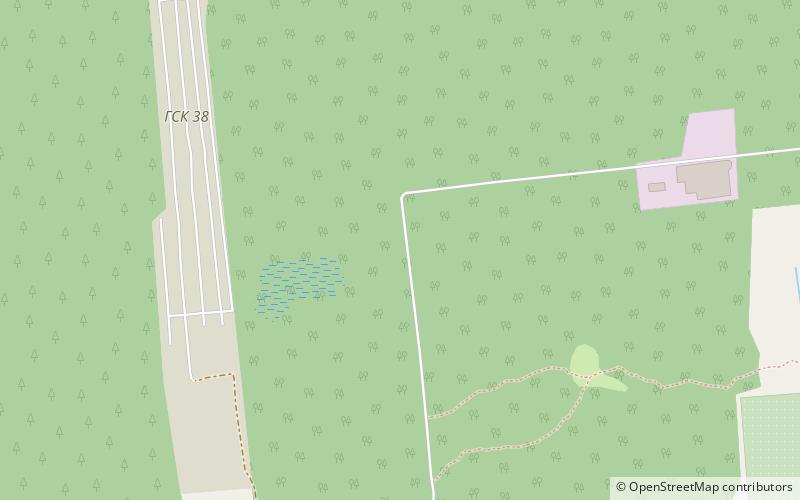
9th radio centre of Moscow – popular in the area (distance from the attraction)
Nearby attractions include: Park otdyha, Istoriko-hudozestvennyj muzej, Vystavocnyj zal, Park otdyha.
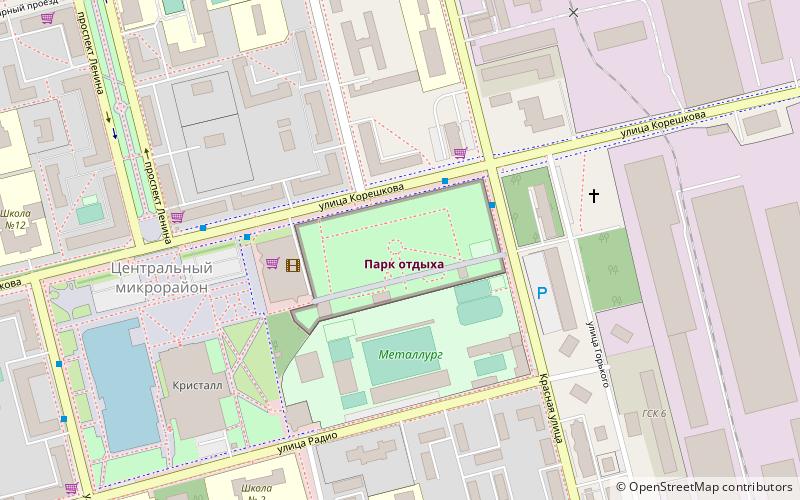
Park otdyha, Elektrostal
30 min walk • Amusement, Amusement park
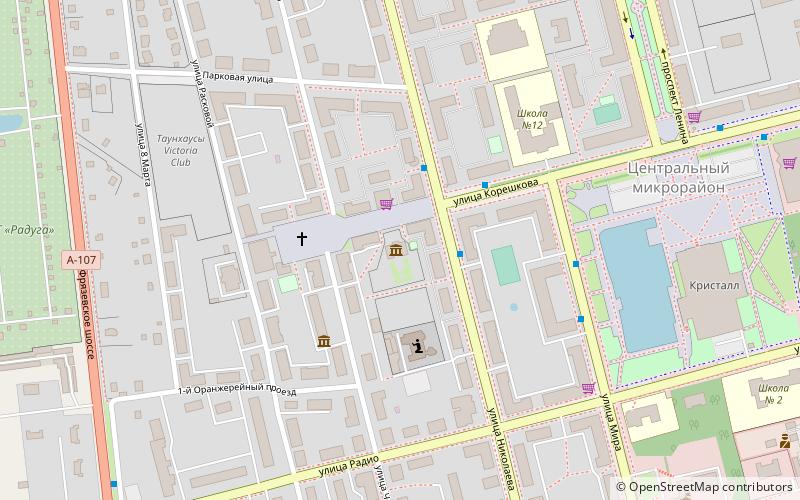
Istoriko-hudozestvennyj muzej, Elektrostal
19 min walk • Museum
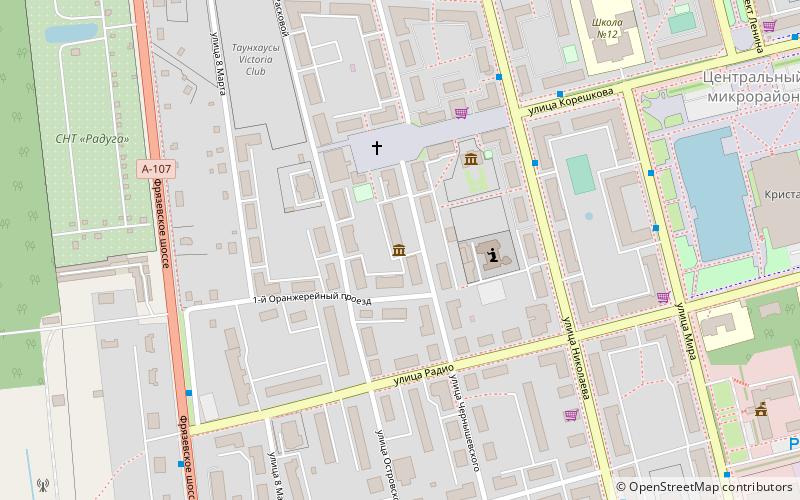
Vystavocnyj zal, Elektrostal
17 min walk • Museum
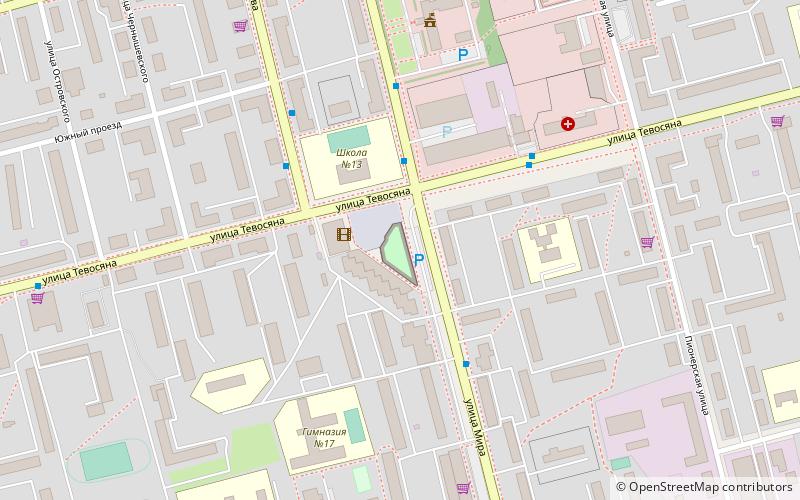
24 min walk • Amusement, Amusement park
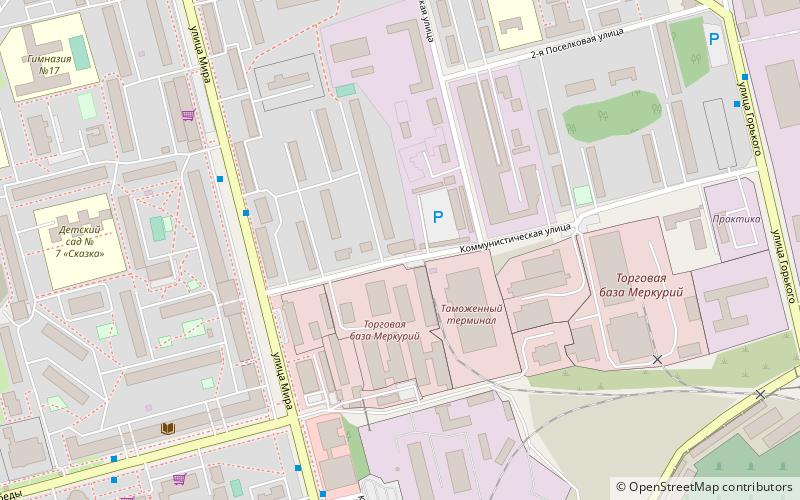
Shopping Center, Elektrostal
32 min walk • Shopping, Shopping centre

IMAGES
VIDEO
COMMENTS
With Trek The Himalayas, you can embark on your adventure with confidence, surrounded by breathtaking landscapes and creating memories to last a lifetime. Our Top Picks Of Summer Treks in Indian Himalayas. Discover our top summer trek picks in the Indian Himalayas for an unforgettable adventure. Journey to Uttarakhand for the legendary Roopkund ...
By Gautam Singh. 2023-12-28. H ere are the 22 best Himalayan treks to do this year. Although it was not easy to pick the best Himalayan treks as every trek is beautiful in its own way, we have put together the best Himalayan treks that we think you should not miss! Beginner-friendly treks like Dayara Bugyal, Brahmatal and Kedarkantha are great ...
The trek combines beautiful mountain scenery with the unique culture of Bhutan where outsiders have had limited access for years. This is a camping trek that reaches a high point in elevation of almost 5000m. #14: Snowman Trek. The Snowman Trek is a 25 day journey that traverses the spine of the Himalaya between Bhutan and Tibet.
It's wonderful that you're planning to start trekking in the Himalayas. You'd be happy to know that around 70% of our trekkers are beginners and always get hooked to trekking after their first trek! Having said that, you must choose your trek wisely — something that is not too difficult, yet will allow you to experience the grand ...
Intrepid has 15-day guided treks to Everest Base Camp in Nepal from £1,043 per person. Flights to Kathmandu not included. The Adventure People has 12-day treks along the Jhomolhari trek from £ ...
Was Nepal right to ban solo trekking in the Himalayas? TRAVEL. The essential guide to visiting Alaska. TRAVEL. This thrilling Chilean trek is the world's southernmost hike. TRAVEL.
The ultimate Himalayan trek and adventure of a lifetime. Stand face to face with Mount Everest and trek along side 4 of the world's tallest peaks. Enjoy the welcoming culture of the Sherpa. HimalayanWonders.com brings you the best tours in the Himalayas. With respect and trust earned over the years, our tours give you value for money and local ...
Trekking in Himachal Himalaya is a different experience altogether, with its lovely trekking trails, dotted with rhododendron & apple orchards, sprawling meadows, ancient villages & lakes, which can be explored with treks like Hampta Pass Trek, Pin Parvati Pass Trek & Friendship Peak trek.
About Treks of Himalaya. With over two decades of experience and expertise in trek leading, mountaineering expeditions, high pass crossings, learning-based camp programs, cycling tours, snow skiing, and more, we are the Top-rated trekking company in the Himalayas. Our qualified and experienced team of local guides, trek, expedition leaders, and ...
Trekking in the Himalayas is a dream come true for outdoor enthusiasts and adventurers. The towering peaks, breathtaking landscapes, and rich cultural heritage make this region a must-visit for those seeking an unforgettable experience. In this ultimate guide, we will delve into the various aspects of trekking in the Himalayas, from ...
All Himalayan treks are graded according to their difficulty level to complete. Consider starting with an Easy grade trek . You should try a route that will be well within your control as a whole; don't test any extremes. Most likely first time you are going to a high altitude place and stay above ~ 3000 m/10000 ft.
Whether you choose the 5-10 km of easy trails or go on rugged terrain for 14-15 days, trekking in Uttarakhand showcases you the best ways of moving through the Himalayas. Some of the popular treks of Uttarakhand are Har ki Dun Trek, Nag Tibba Trek, Kedarkantha Trek, Valley of Flowers Trek, Brahmatal Trek, Dayara Bugyal Trek, and Kuari Pass Trek.
Best Months: January, February, march, April, May, June, September, October, November, December. A view of Julota campsite on the Kedarkantha trek. Picture by Harish NN. There are many reasons why it is a very popular trek to do in the Indian Himalayas. The most important of them is this — the summit climb.
Walking the Himalayas has a team of experienced and trained trek leaders who are passionate about trekking and sharing their knowledge with others. We have deep knowledge of the terrain, weather conditions, and culture of the region, and are committed to providing a safe, enjoyable, and authentic trekking experience for their travelers.
Fixed Departures and customised trekking across Indian Himalayas. We arrange treks in Sikkim, Darjeeling, Uttarakhand, Himachal Pradesh, Kasmir and Ladakh. 9163283000/9836133166. 10am-6pm (Mon to Sat) ... A broad spectrum of treks from Sikkim to Kashmir covering the Himalayas. Tailored Tours. Customised tours and itineraries that suit your ...
Luxury Holidays & Adventures. Buy our Luxury Trek and Tour packages in the Himalayas. Our packages are curated to provide premium accommodations, expert guides and exclusive experiences, ensuring an unforgettable journey through the awe-inspiring landscapes of the Himalayas. $4240.
Trekking is also changing. Many assume walking in the Himalayas is only for rugged types who enjoy roughing it. That was true in 1953, when Everest was first climbed and trekking tourism didn't exist.
Trek The Himalayas is a registered adventure tour operator by Indian Mountaineering Foundation (IMF) and Ministry Of Tourism (MOT) Trekkers have to apply for leave at least 20 days before trek departure date, This service is exclusive to Indian government employees and is applicable only for treks within India.
Kedartal is a glacial lake in the Himalayas, in Uttarakhand, at an altitude of 15,580 ft.The Kedartal Trek is a challenging 9 km trek that starts at 11,000 ft and reaches 16,000 ft over 3-4 days. The trail is rocky, with steep ascents and descents.
90 likes, 4 comments - neeraj._.jat on April 28, 2024: "In the heart of the Himalayas, where every view is a masterpiece ️ #bhrigulaketrek #mountains #himachalpradesh #trekking #adventure...". Neeraj Jat | In the heart of the Himalayas, where every view is a masterpiece 🏞️ #bhrigulaketrek #mountains #himachalpradesh #trekking #adventure ...
Get directions to Yuzhny prospekt, 6к1 and view details like the building's postal code, description, photos, and reviews on each business in the building
Data Collection in the Moscow Metro. by Gulnaz Aksenova and Artur Shakhbazyan. In the words of John Holland, " the city is a pattern in time ." Yet actions within its boundaries leave traces. Whether crossing the street, making a phone call or entering the subway, our traces are retained in the city's memory. Arbatskaya Station, Moscow Metro.
The 9th radio centre of Moscow was a high power shortwave and medium wave broadcasting facility at Elektrostal near Moscow.Its broadcasting frequency was 873 kHz with a transmission power of up to 1200 kilowatts. It was also used as radio jammer of "unwanted" stations.
Elektrostal. Elektrostal ( Russian: Электроста́ль) is a city in Moscow Oblast, Russia. It is 58 kilometers (36 mi) east of Moscow. As of 2010, 155,196 people lived there.